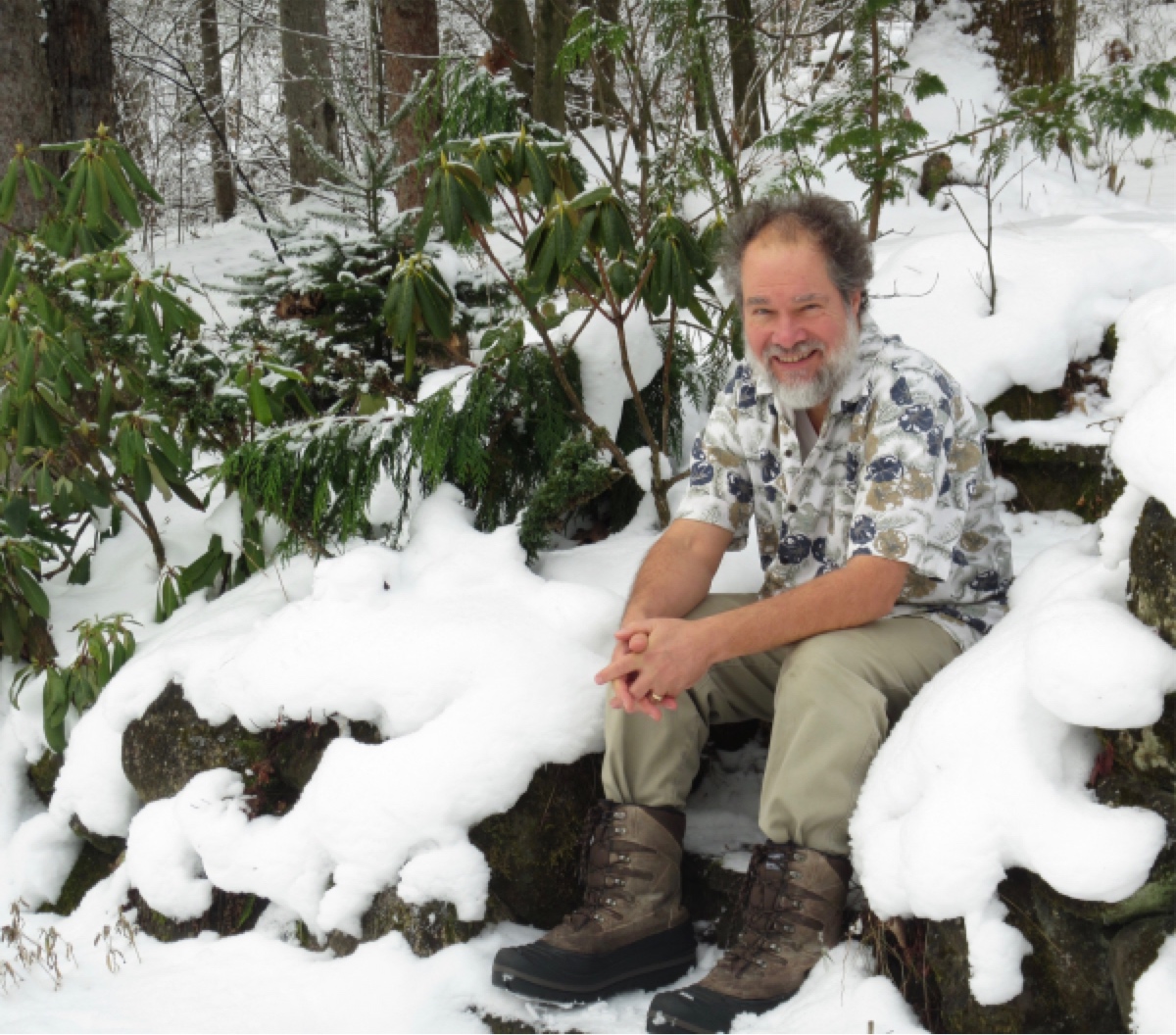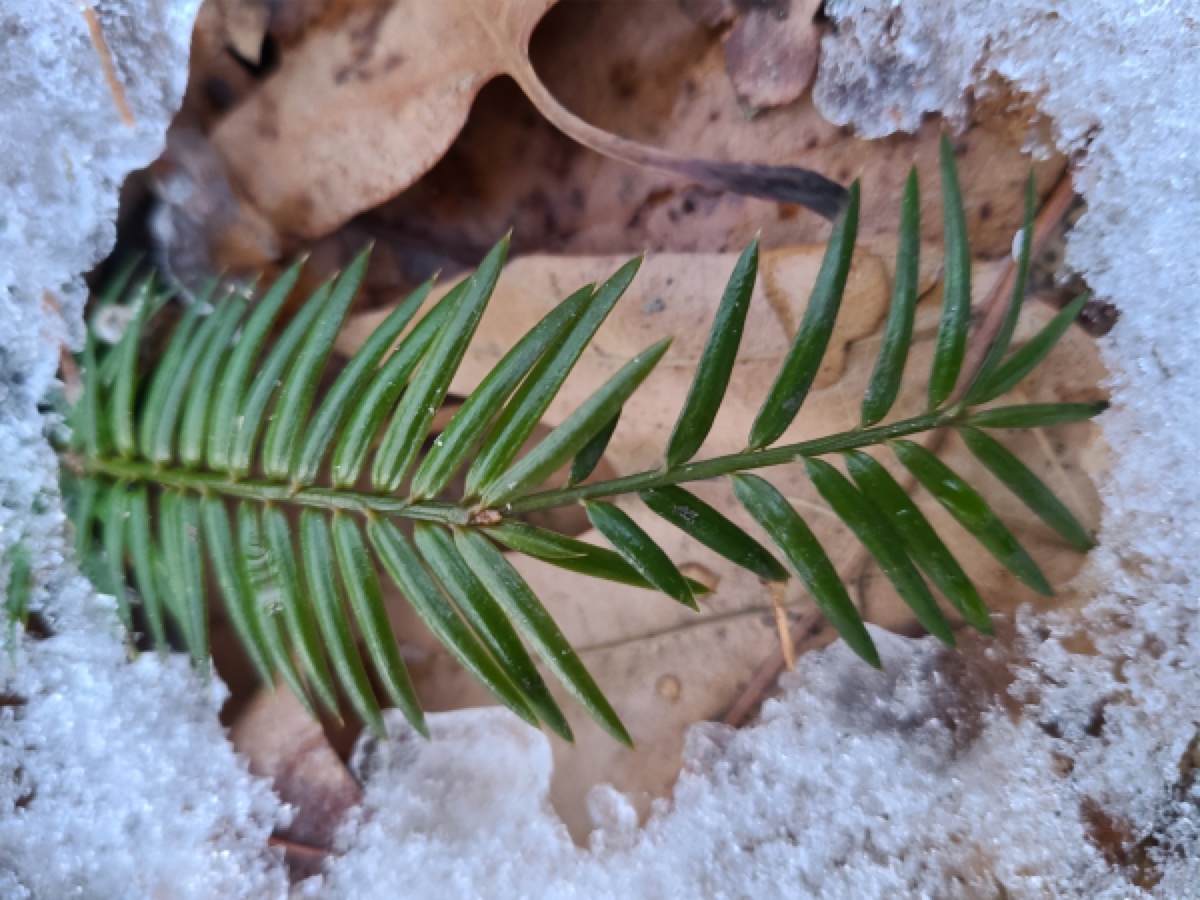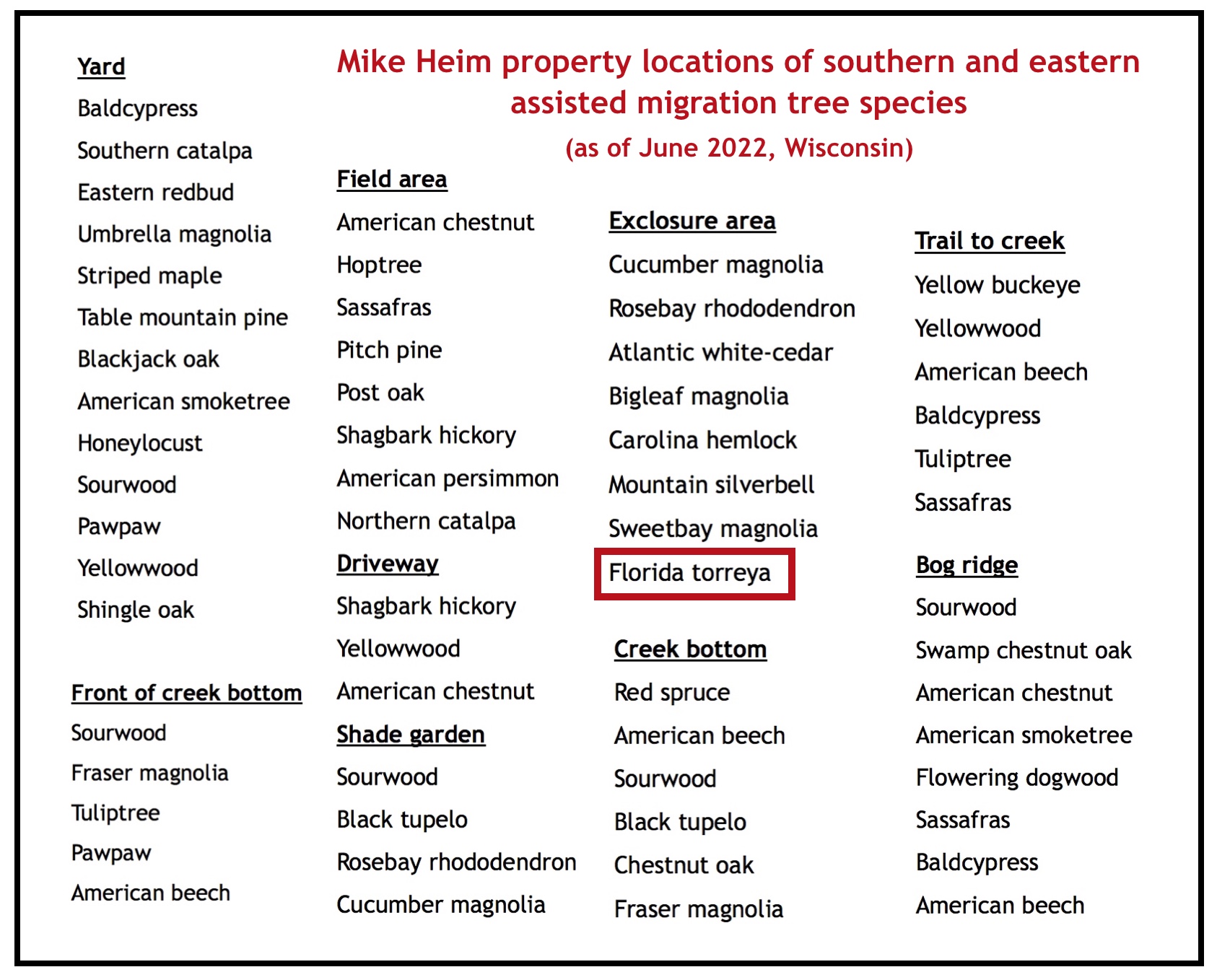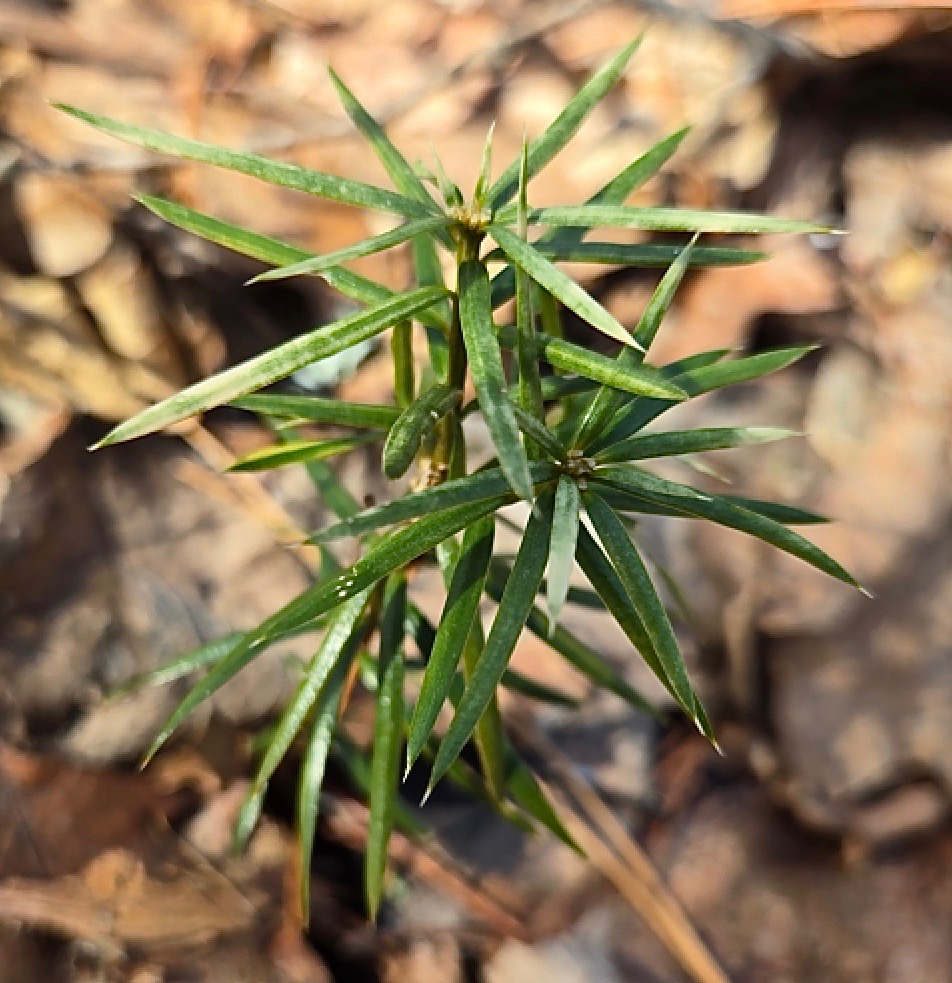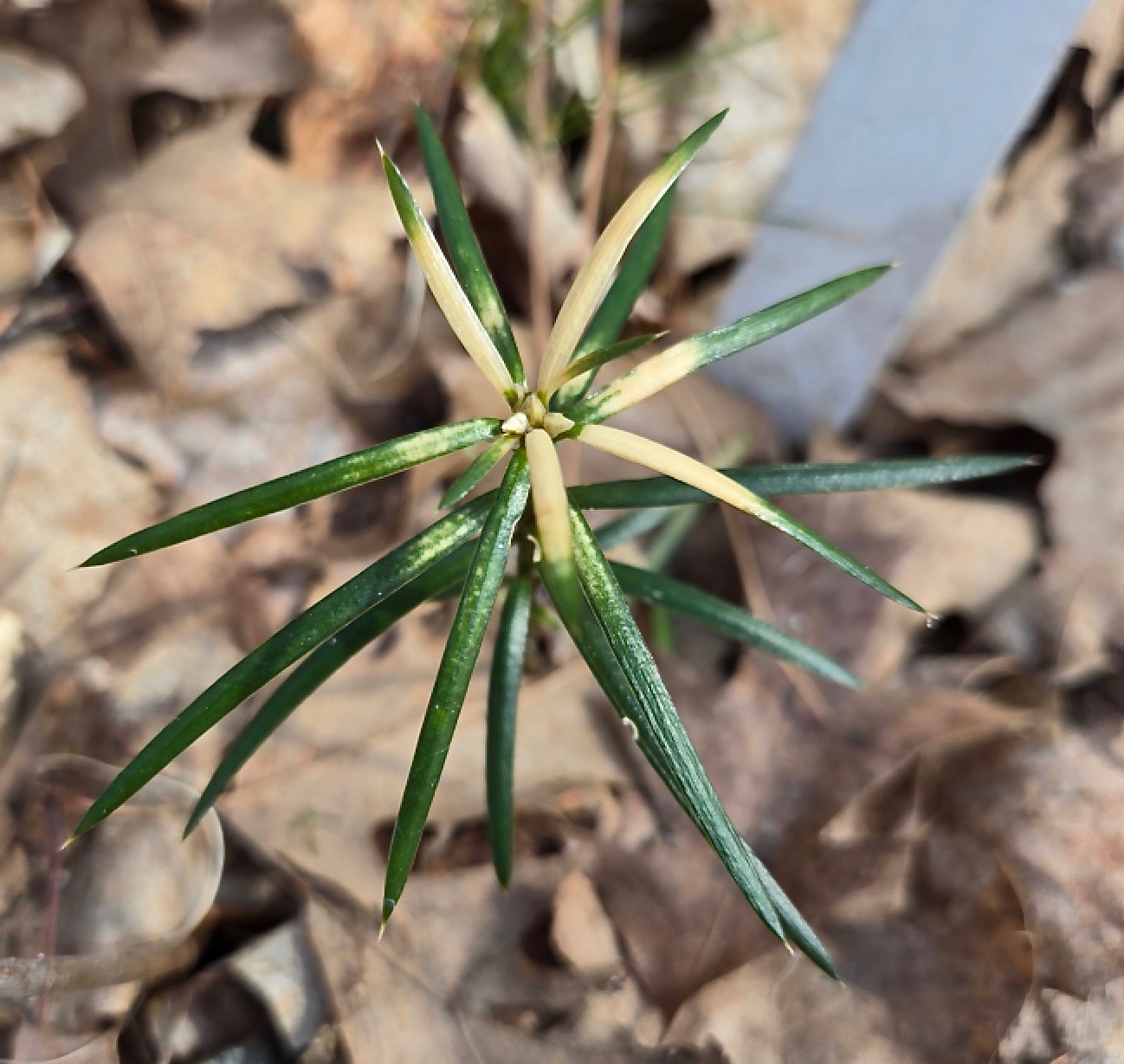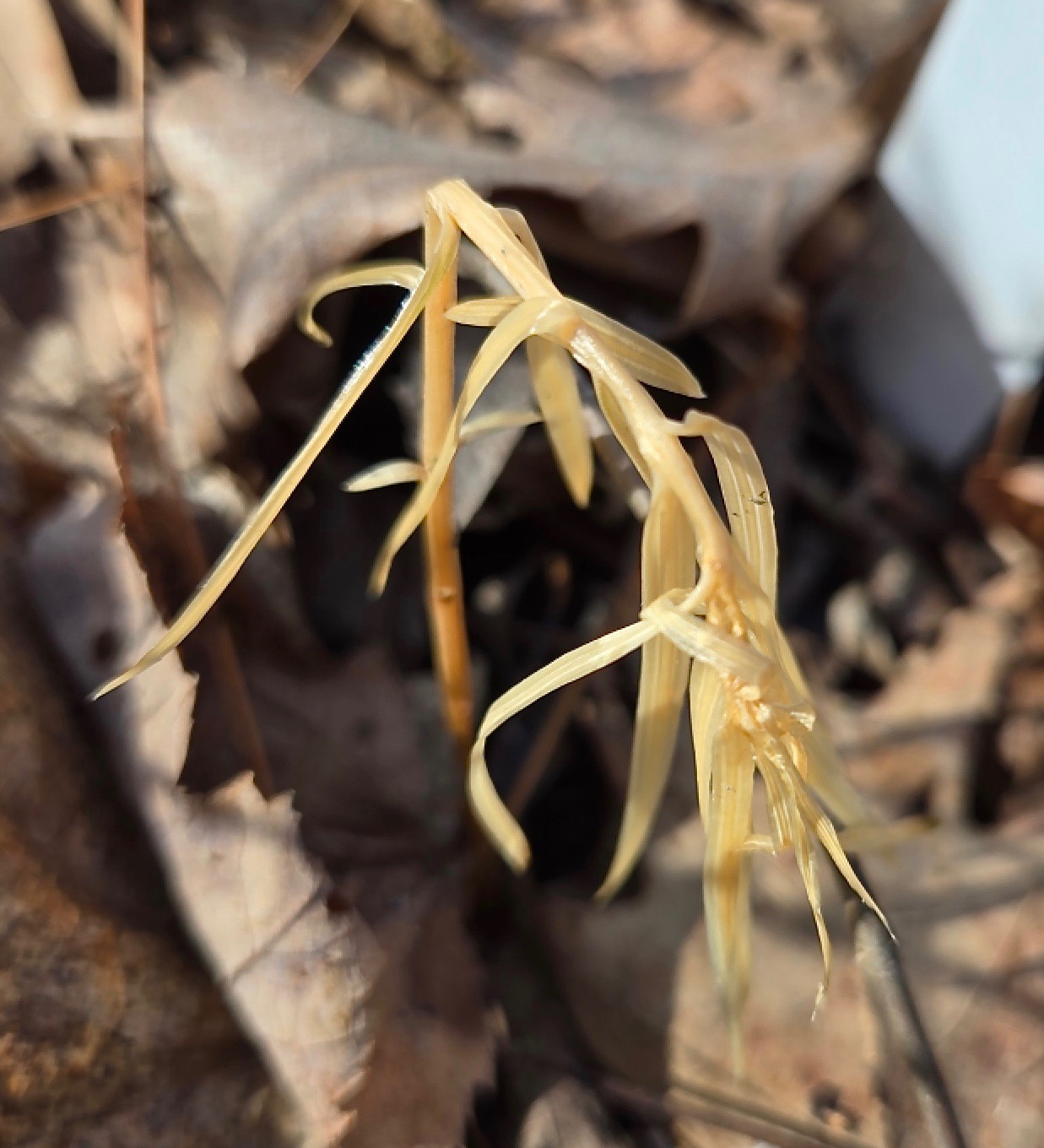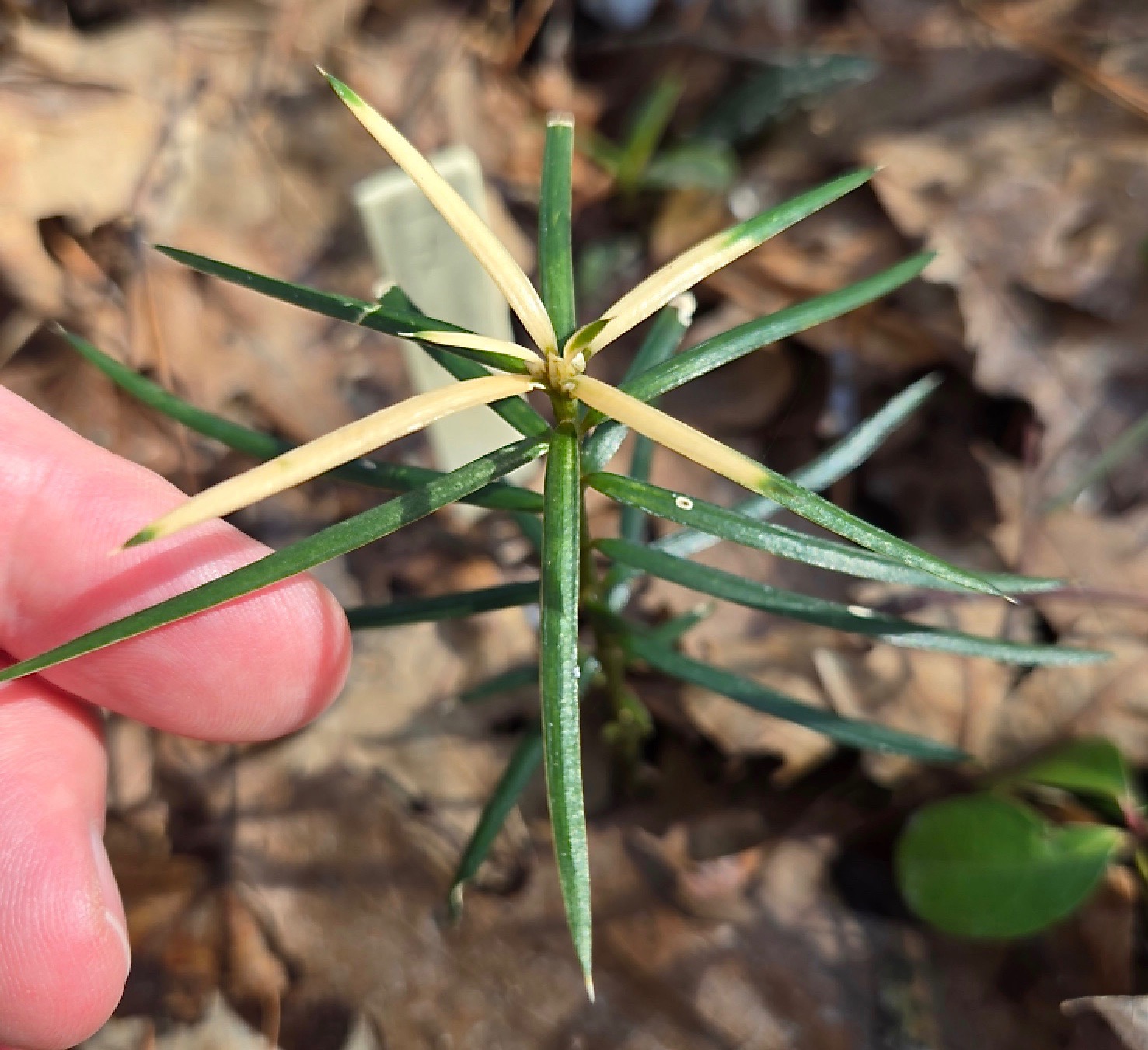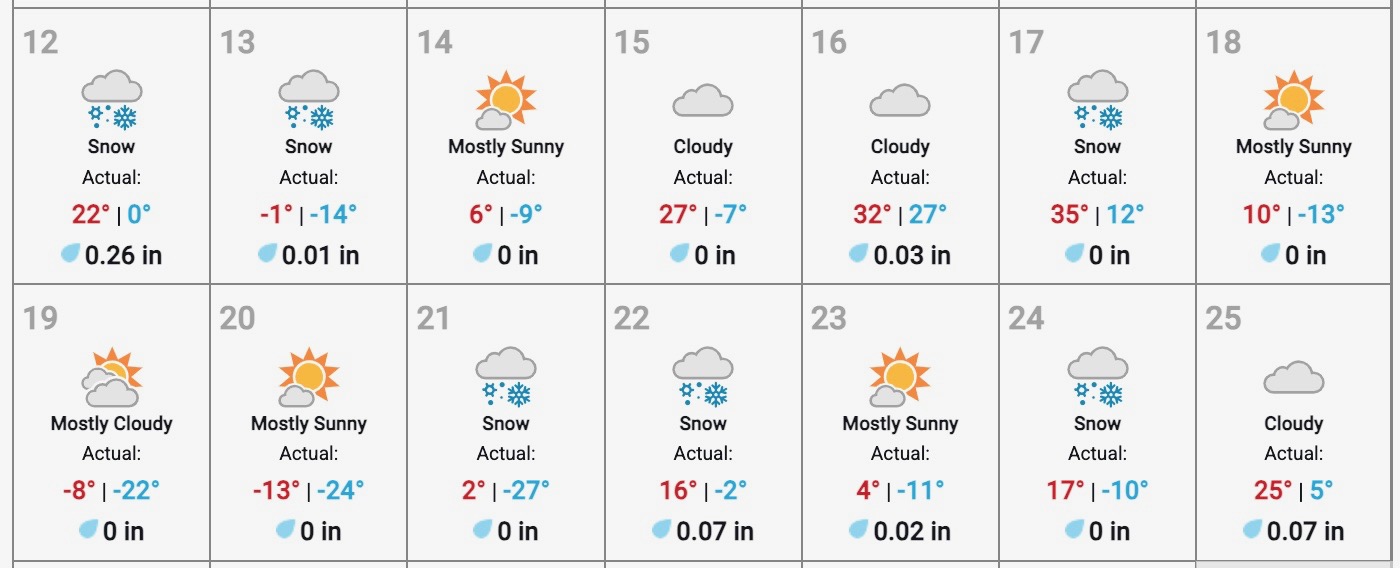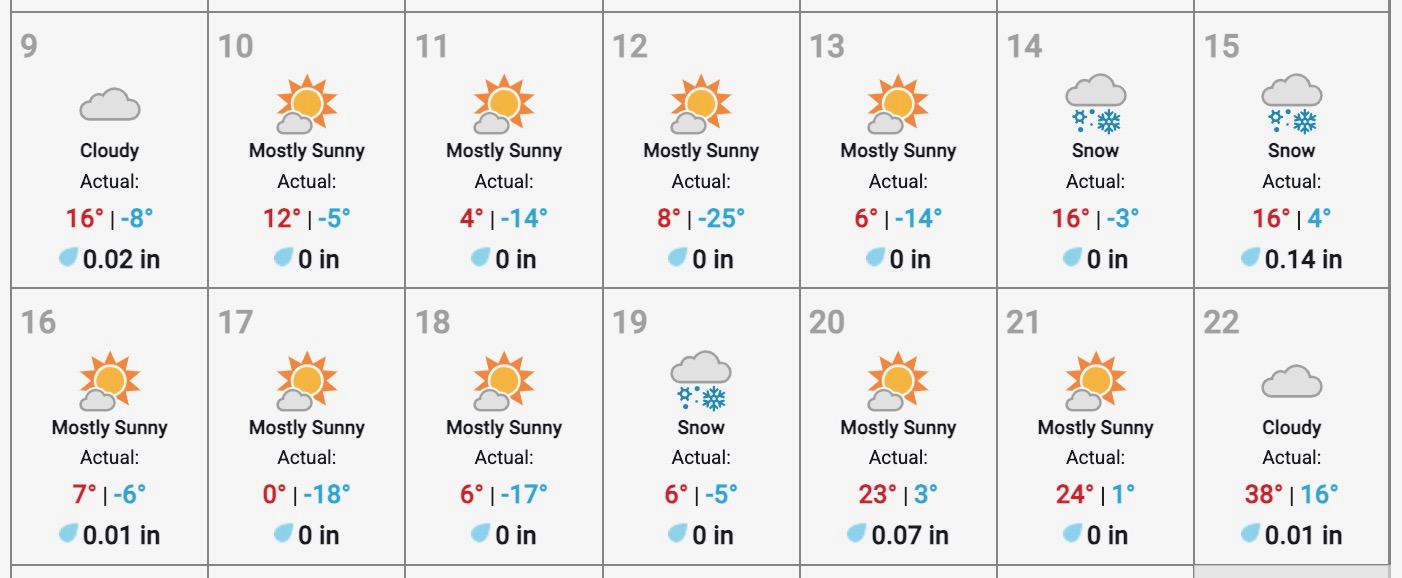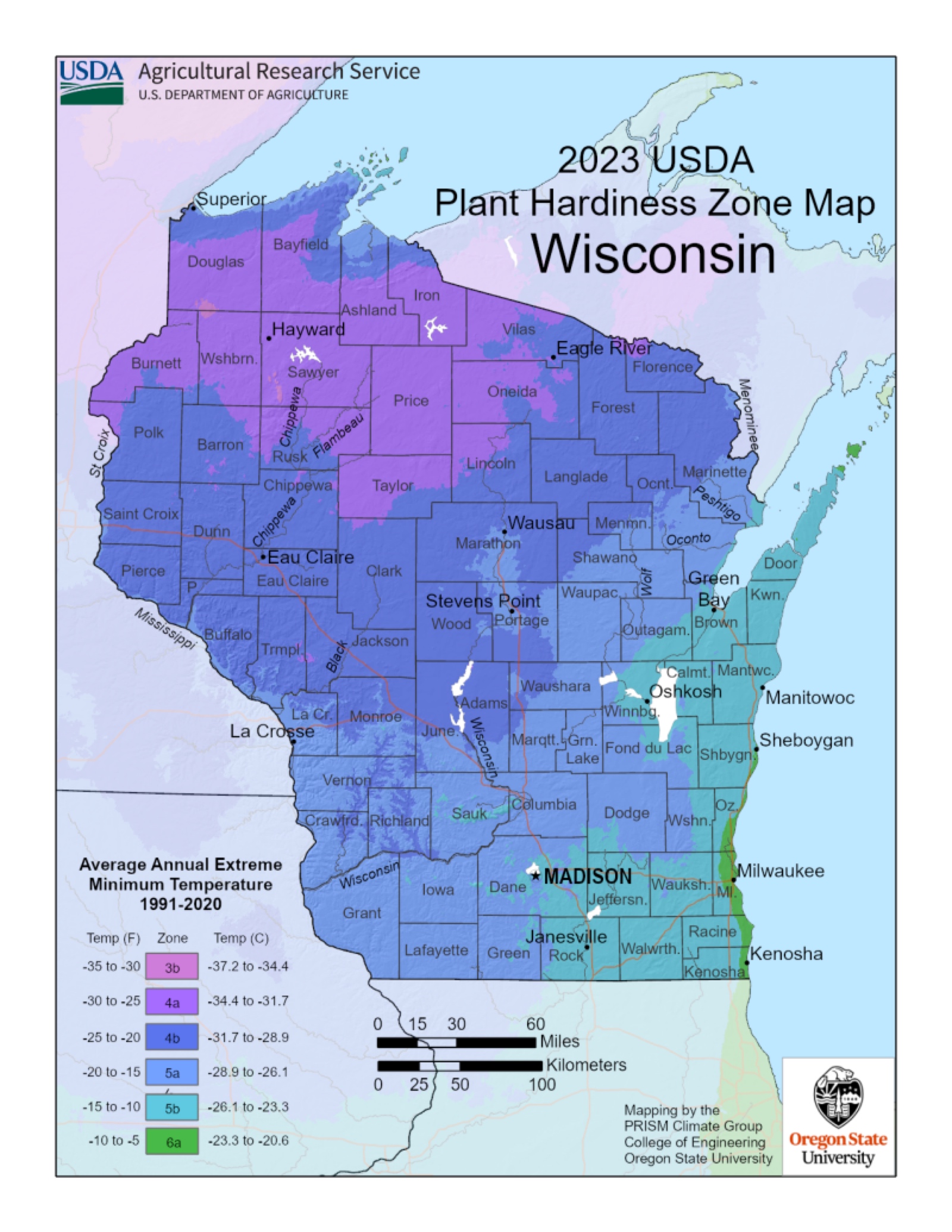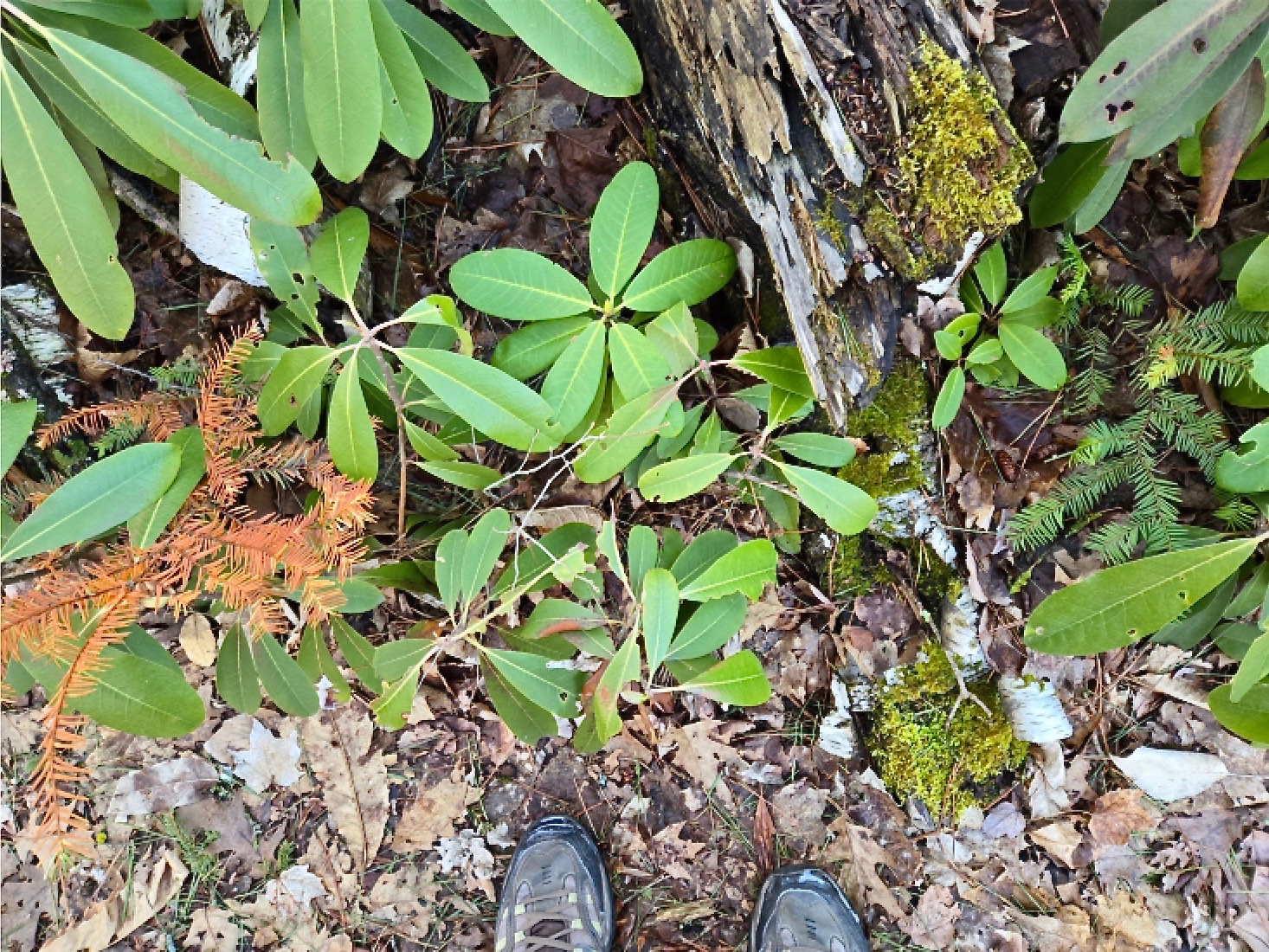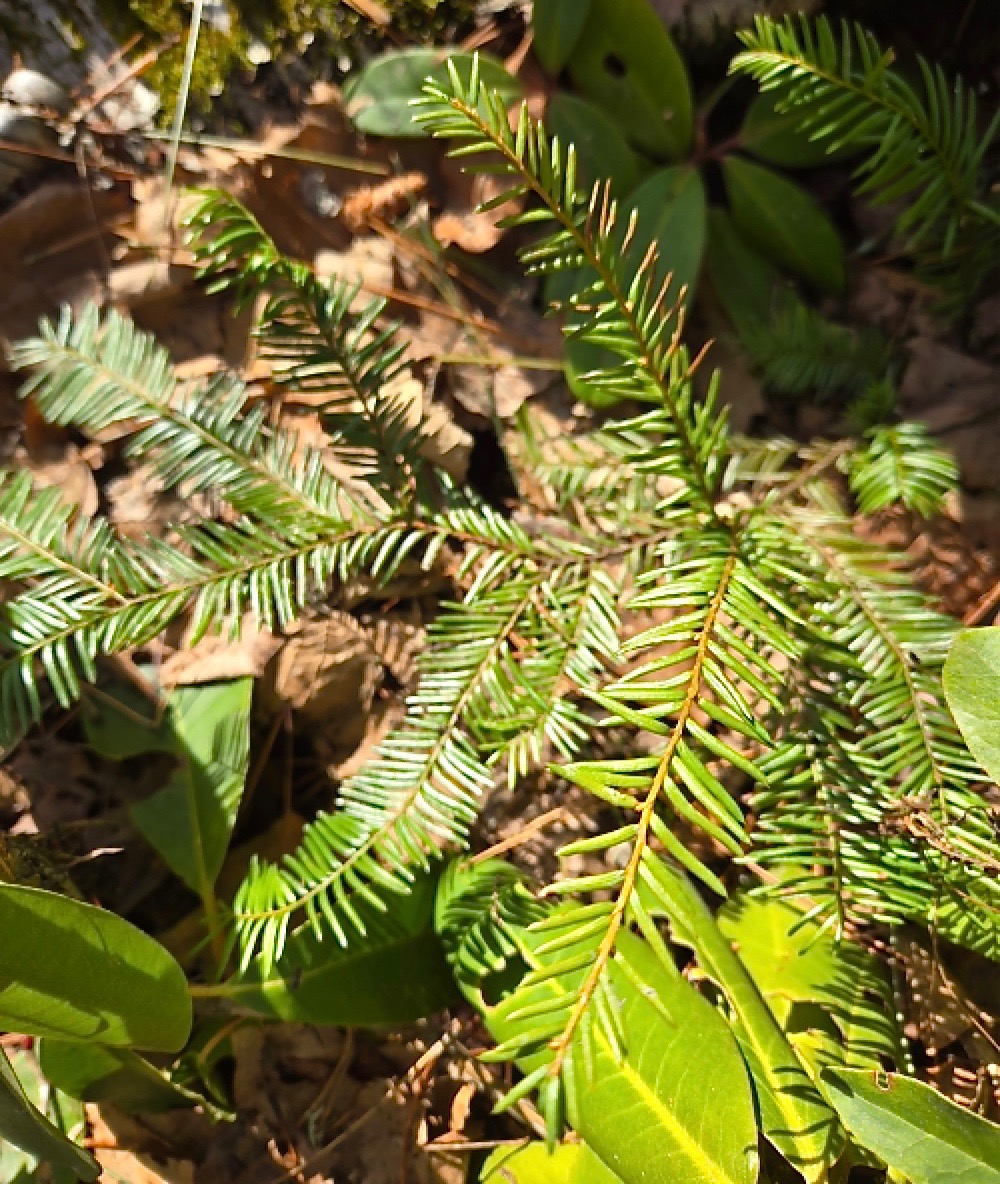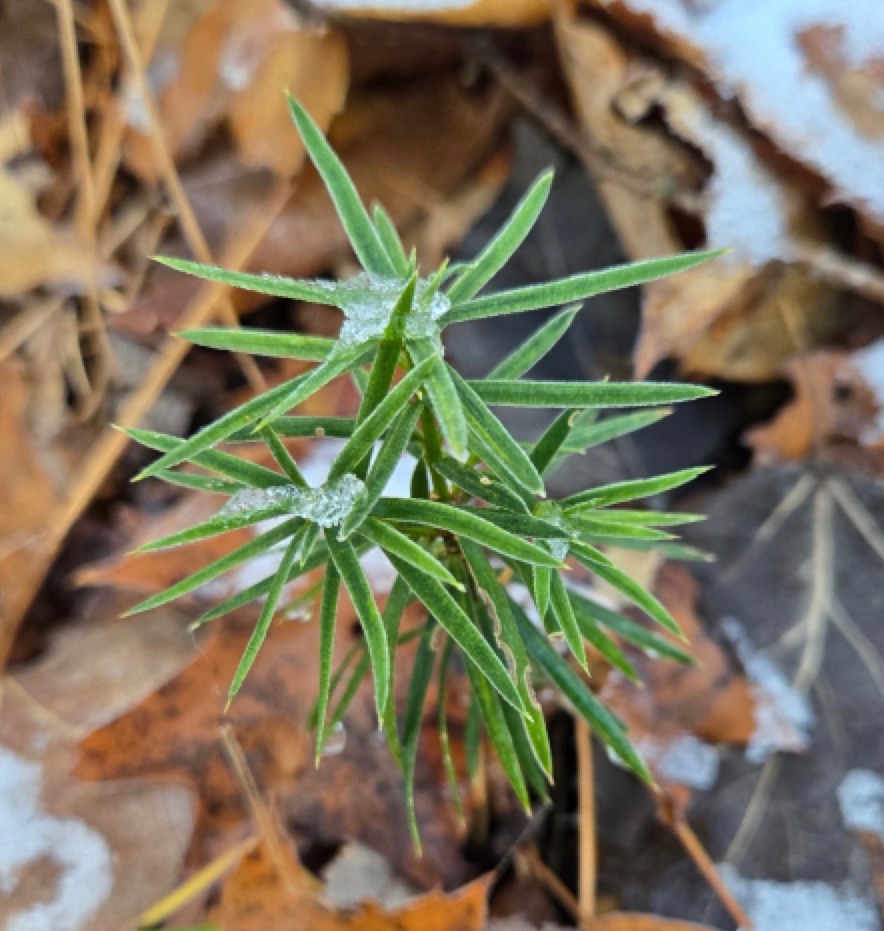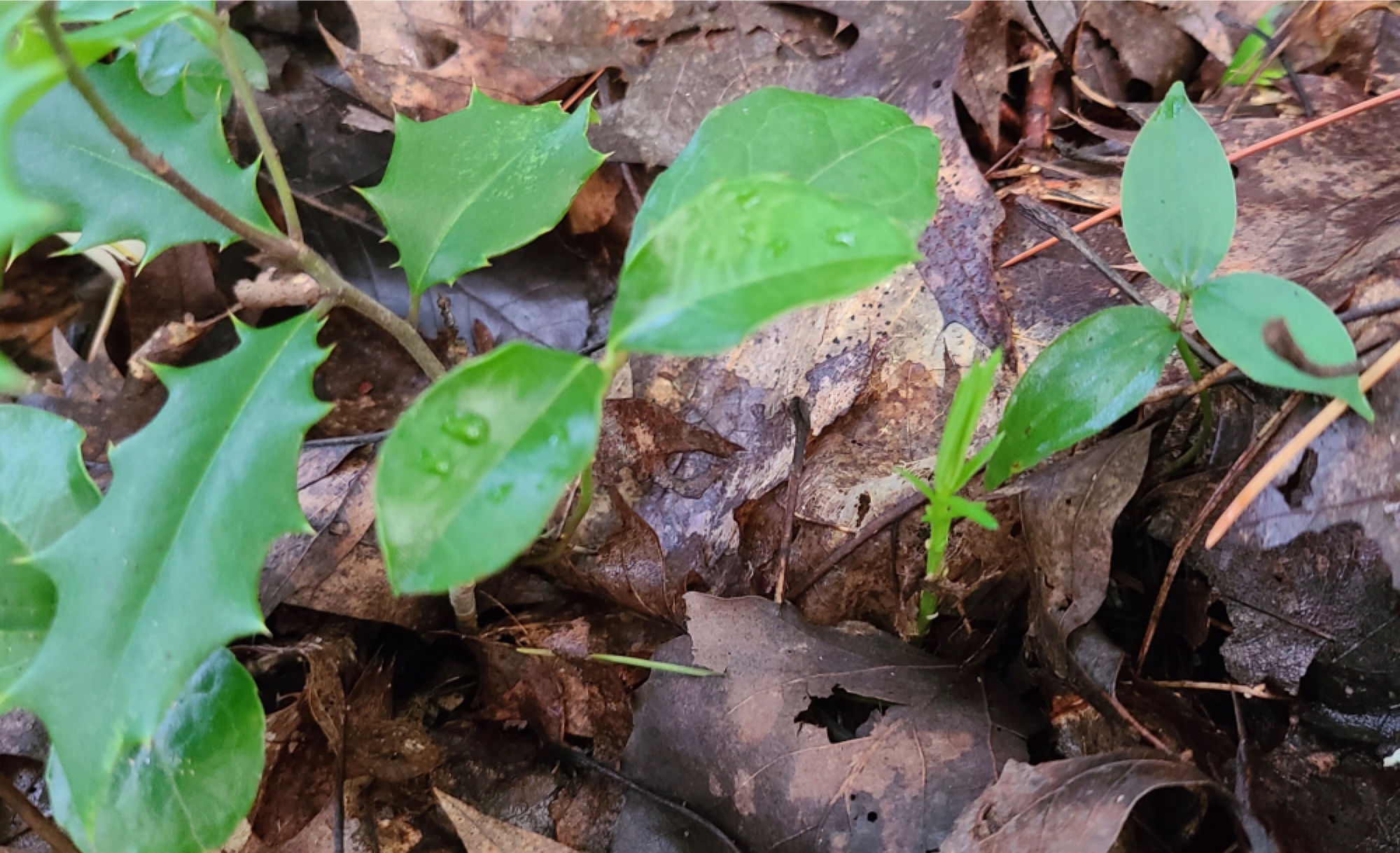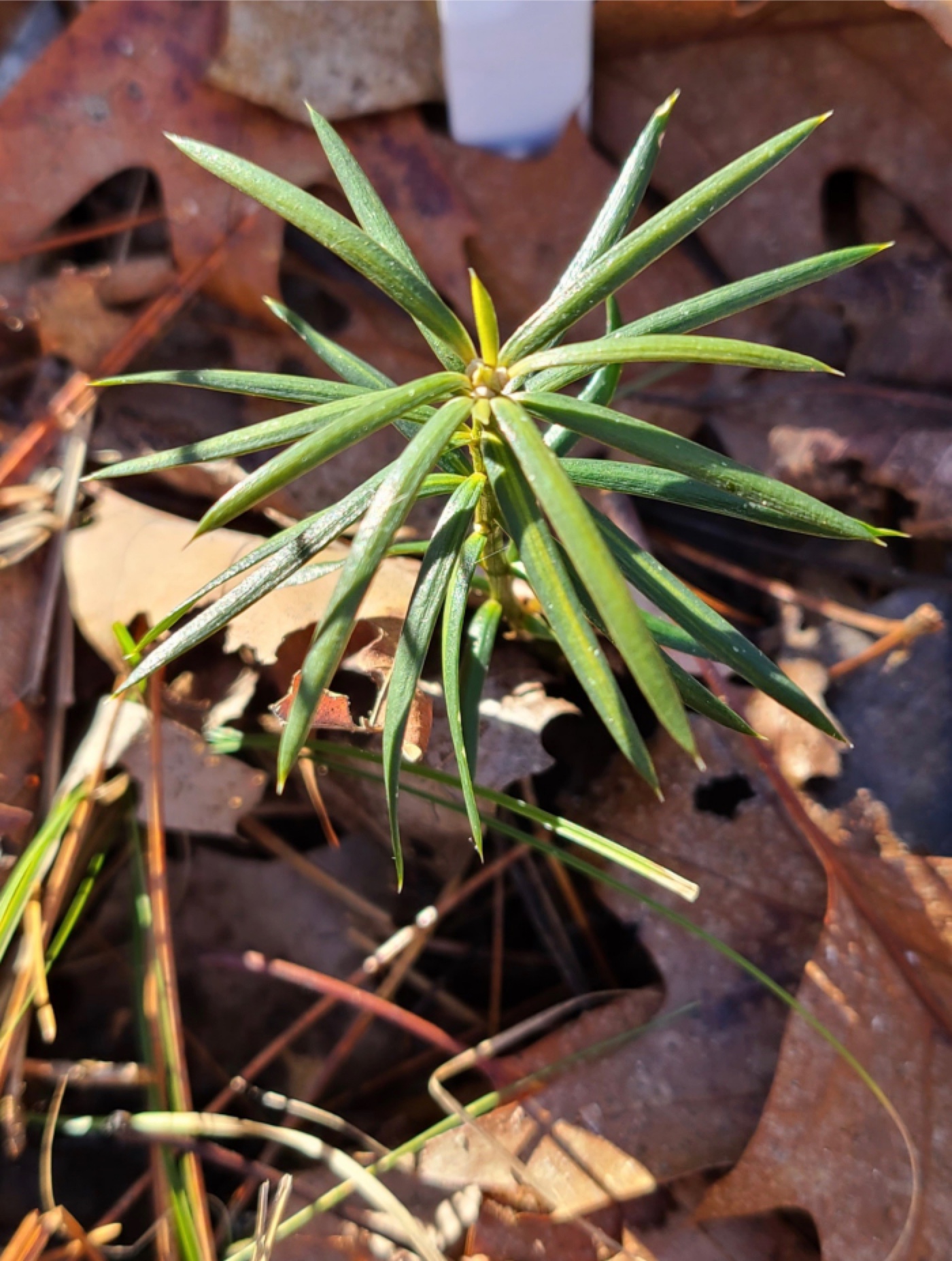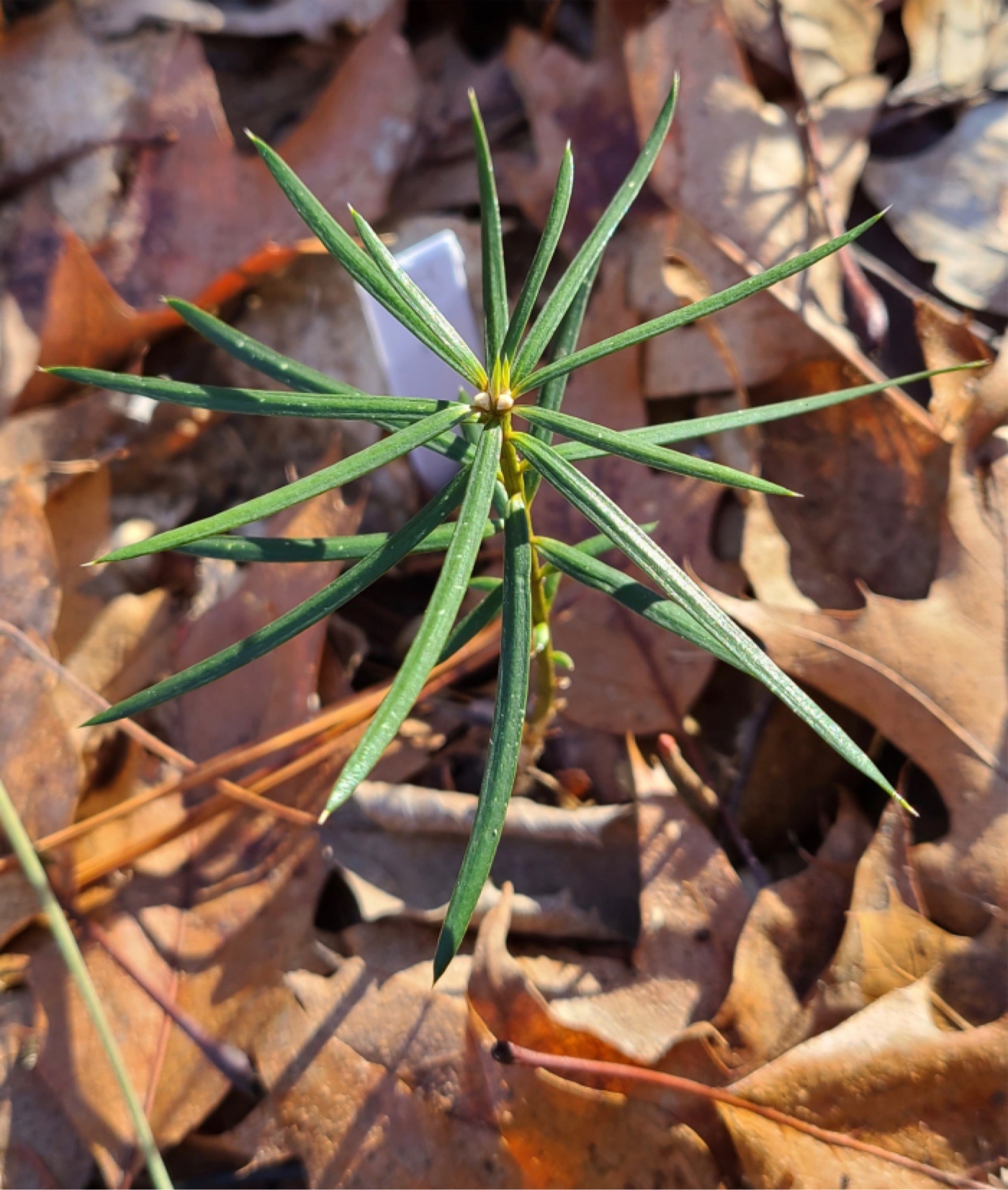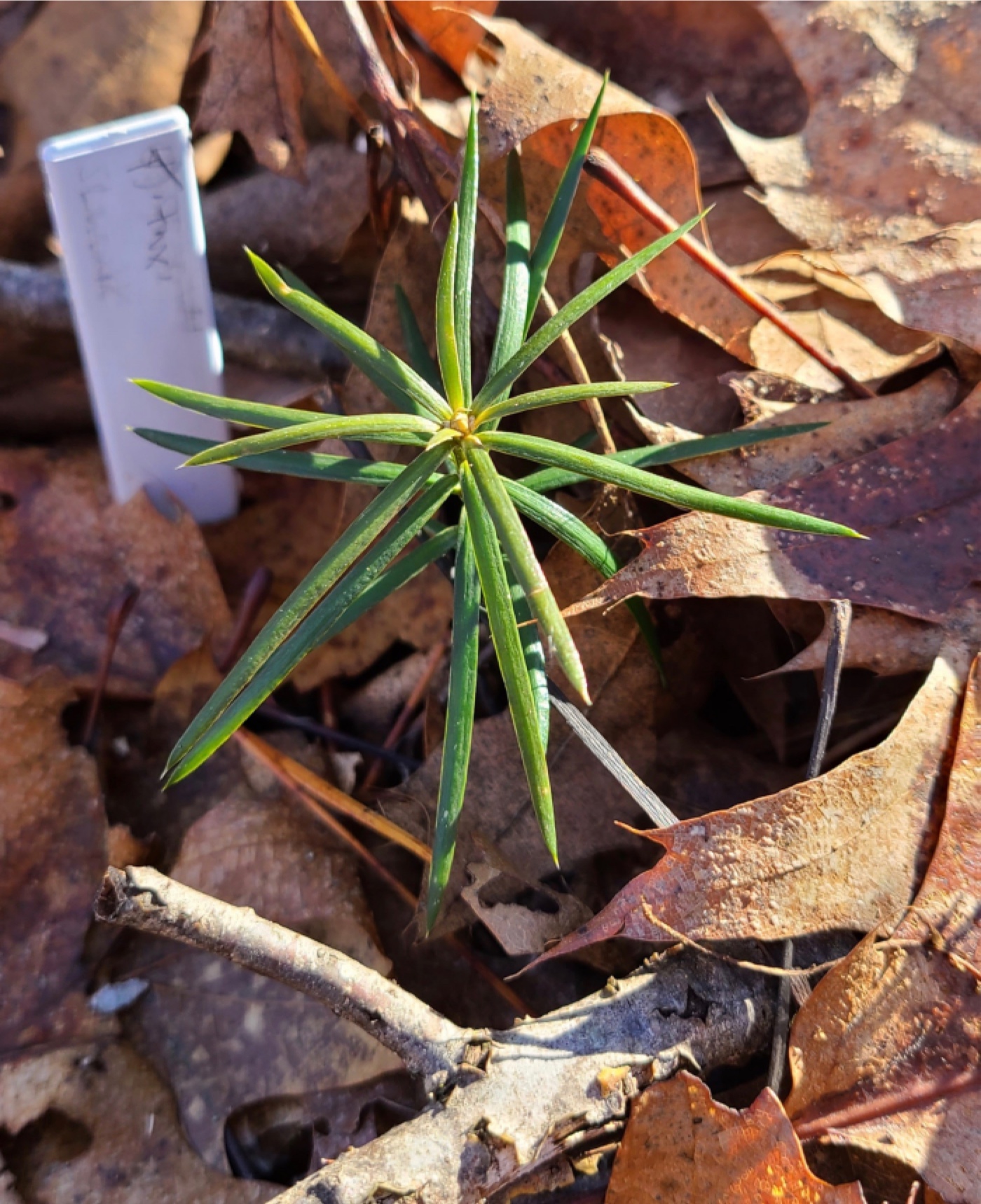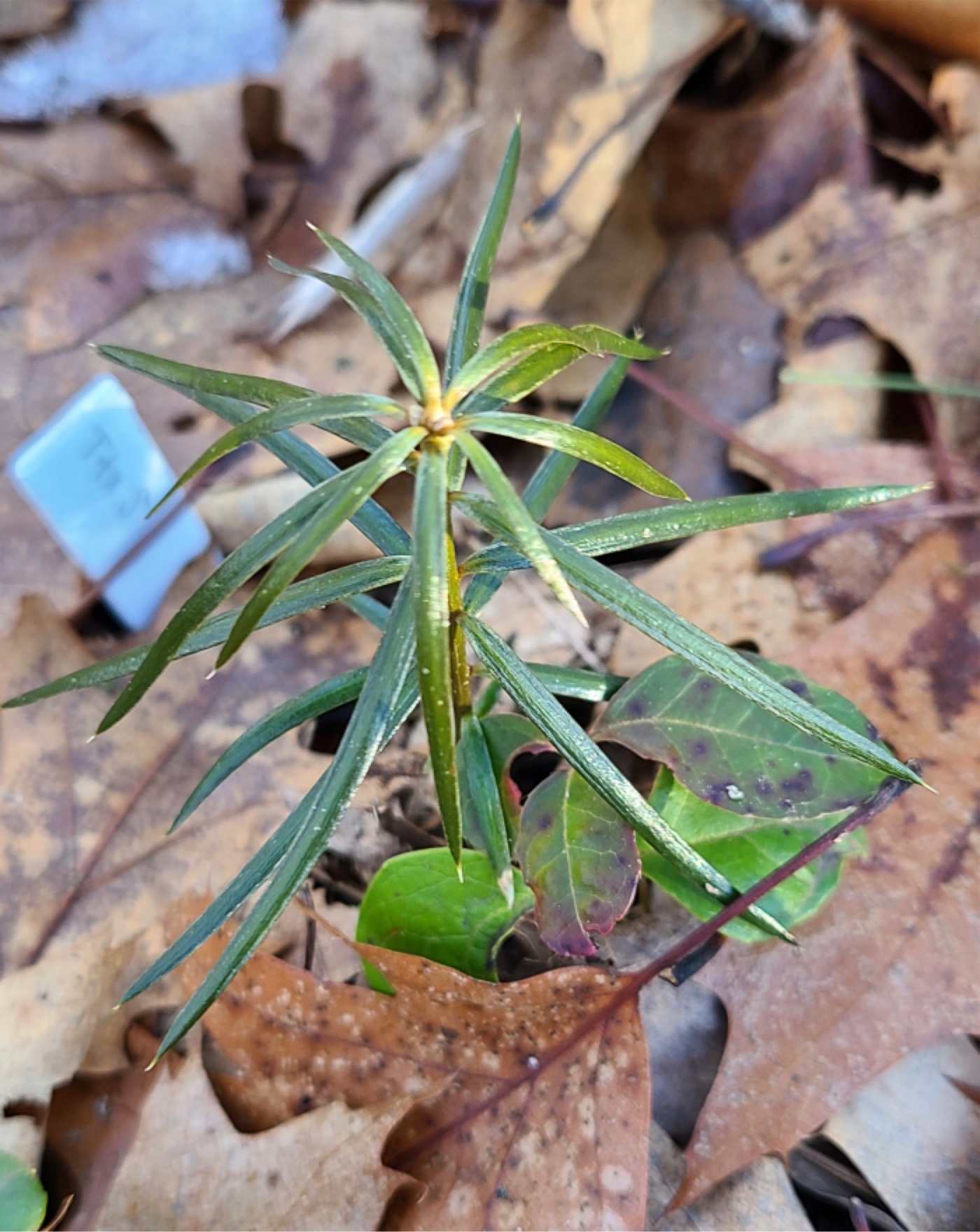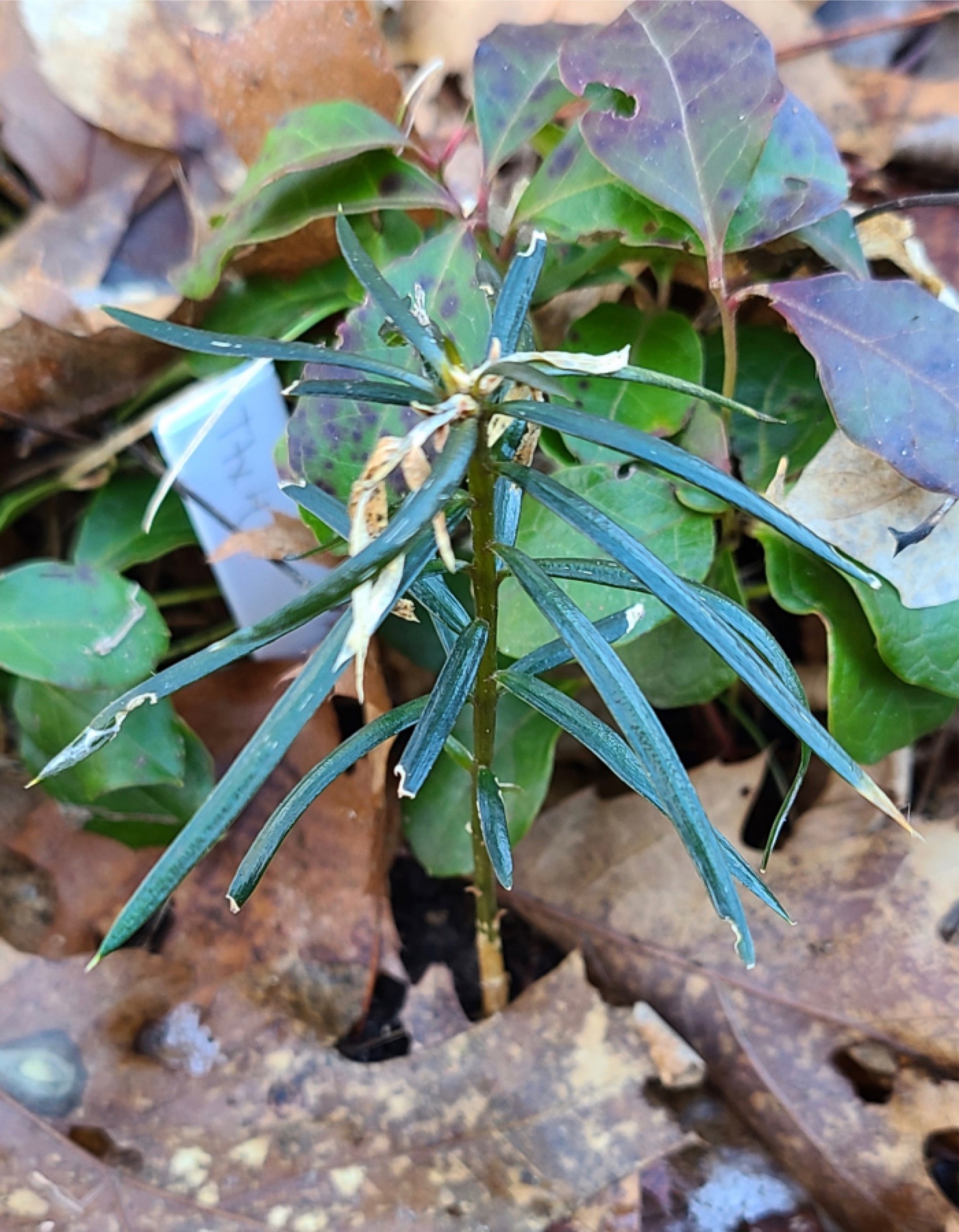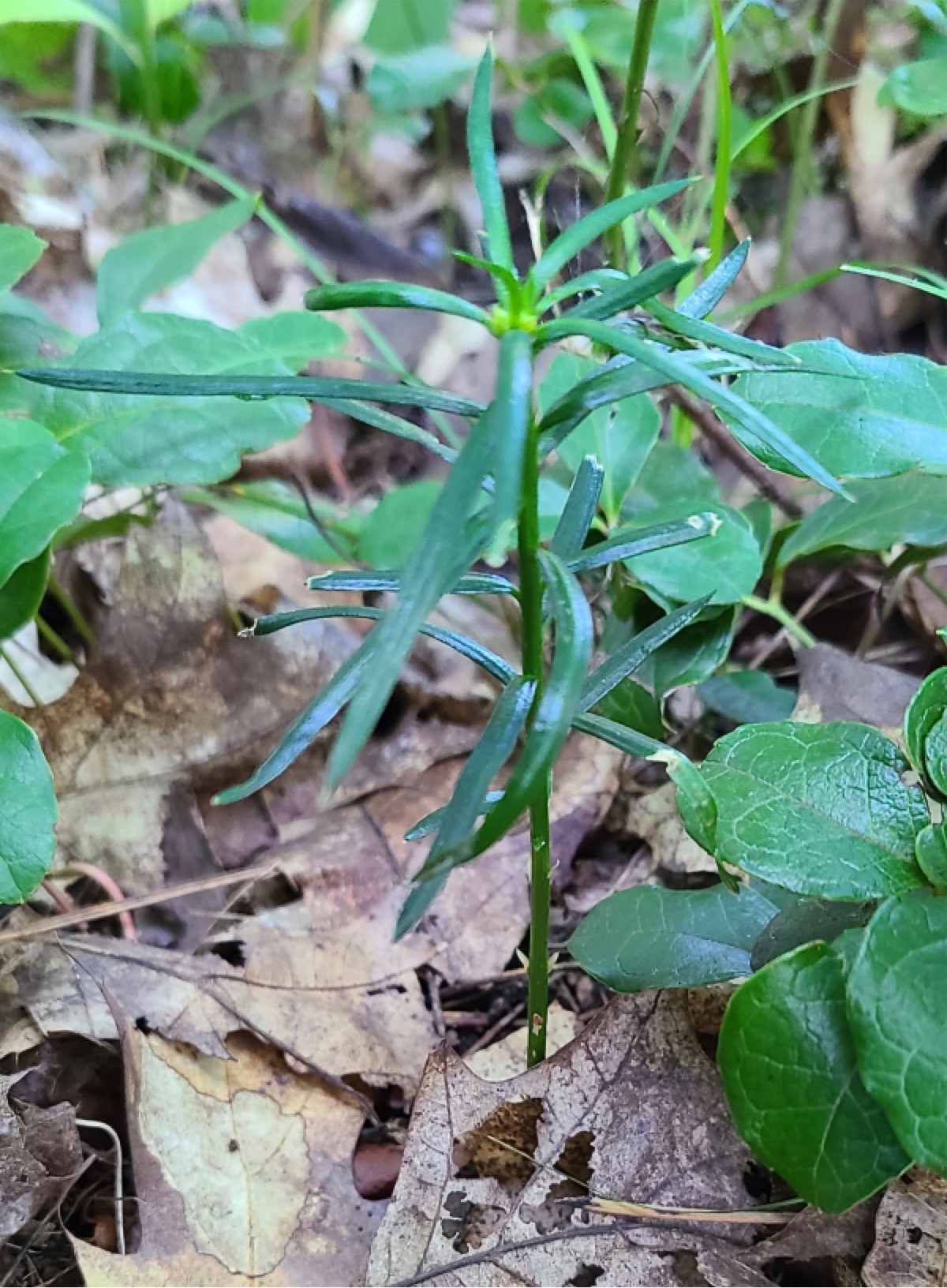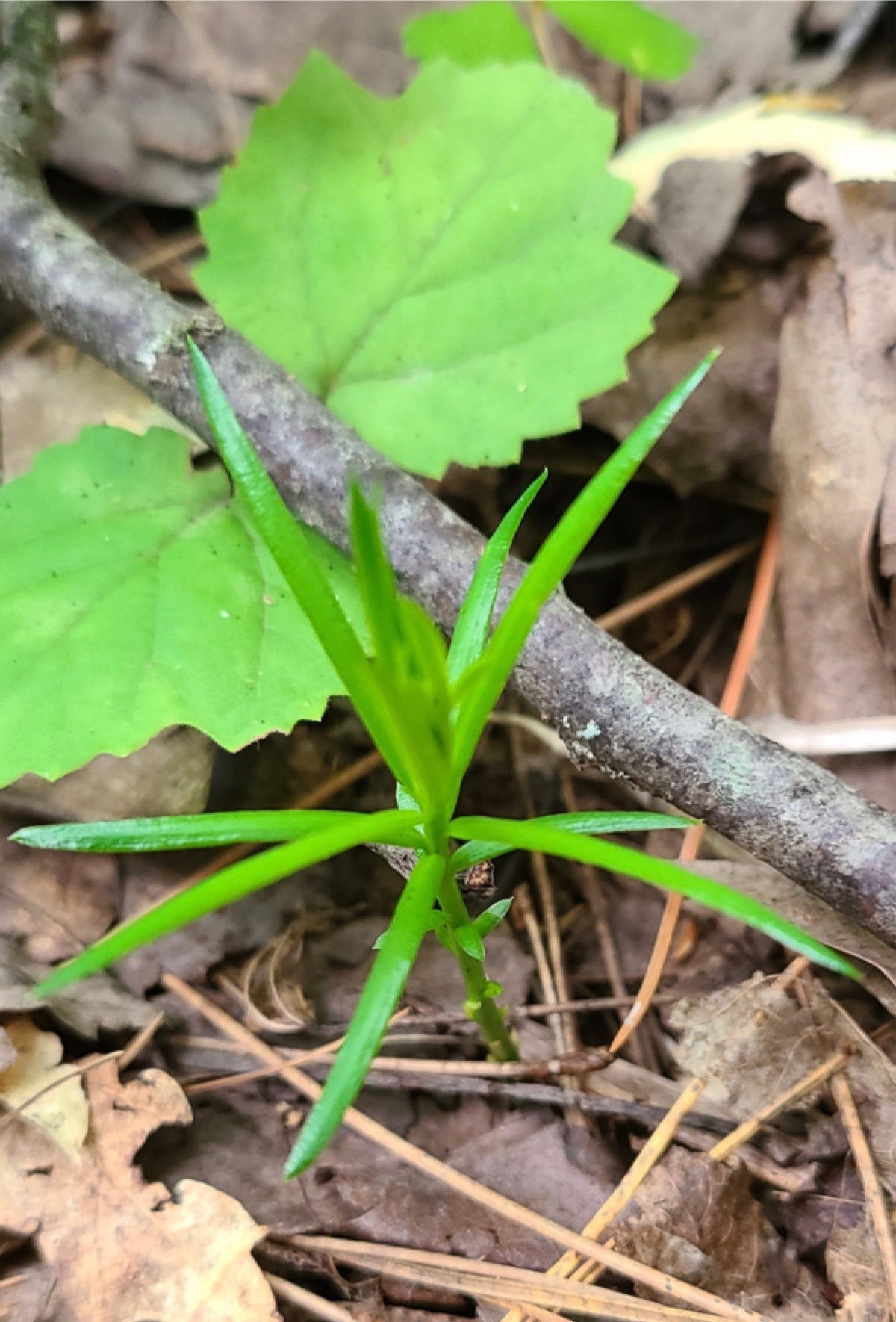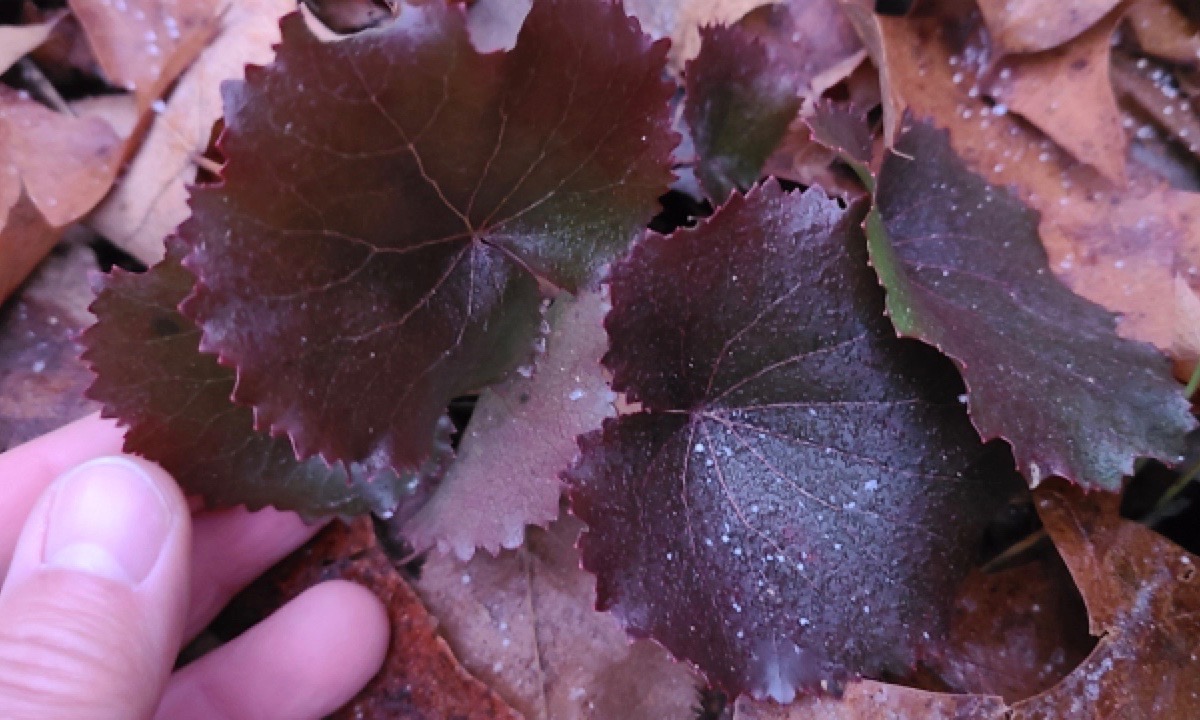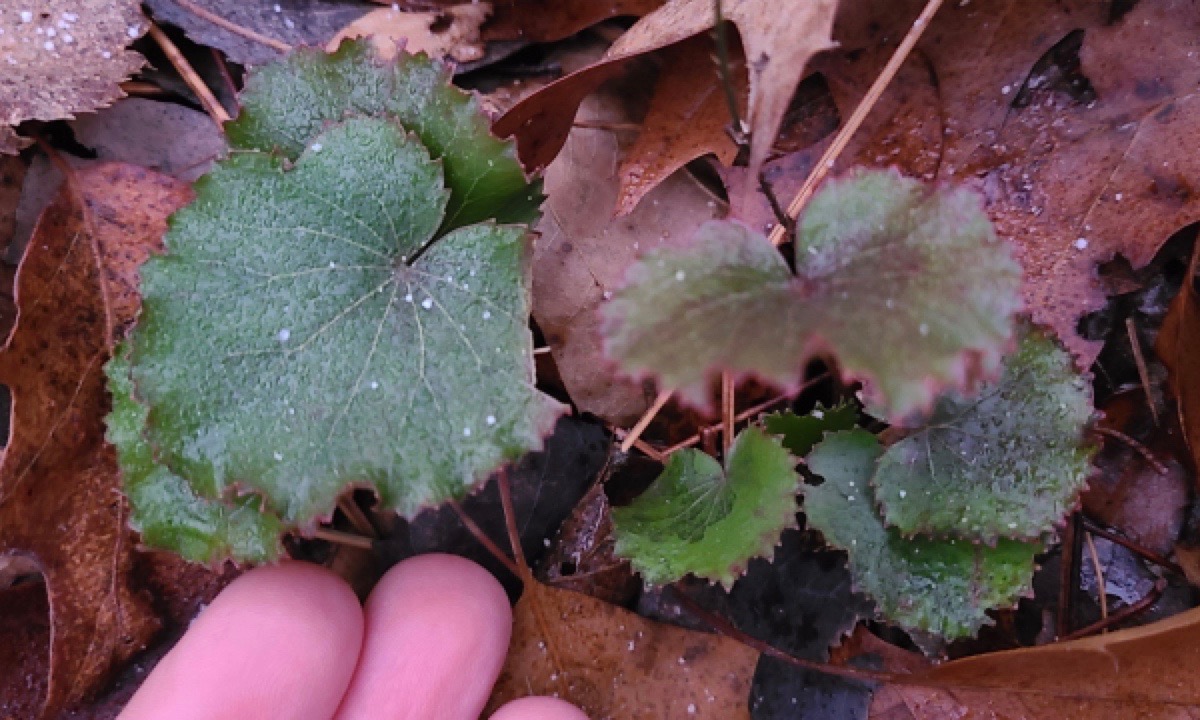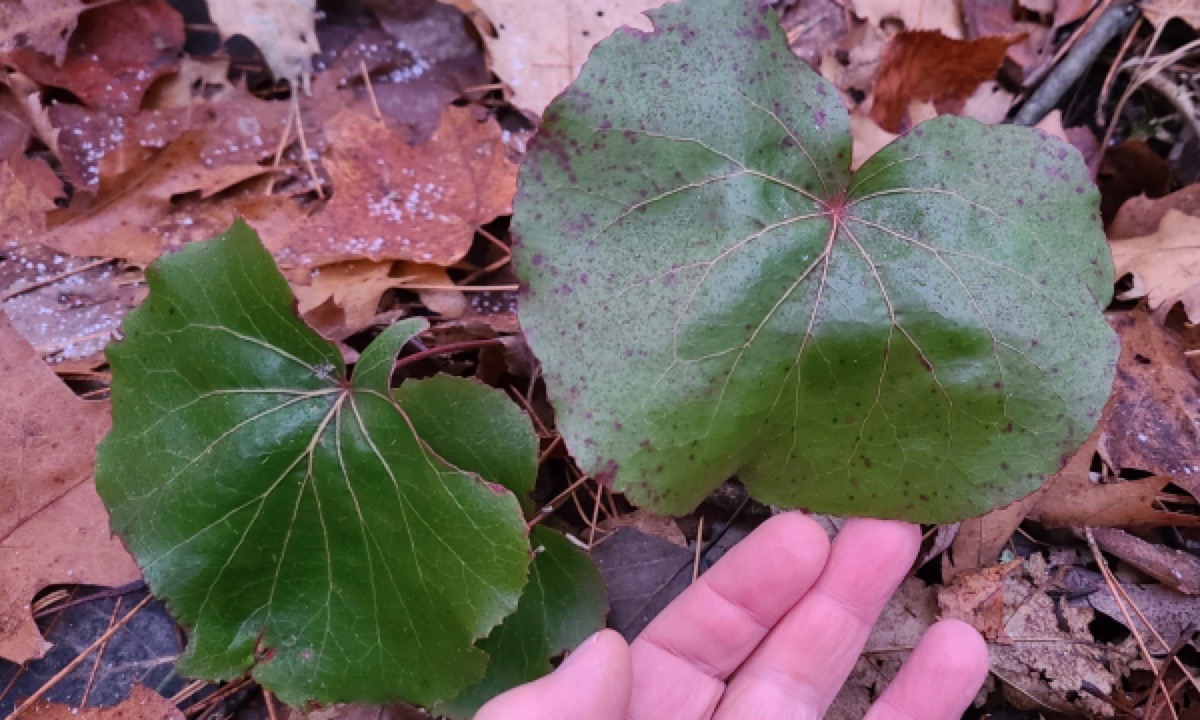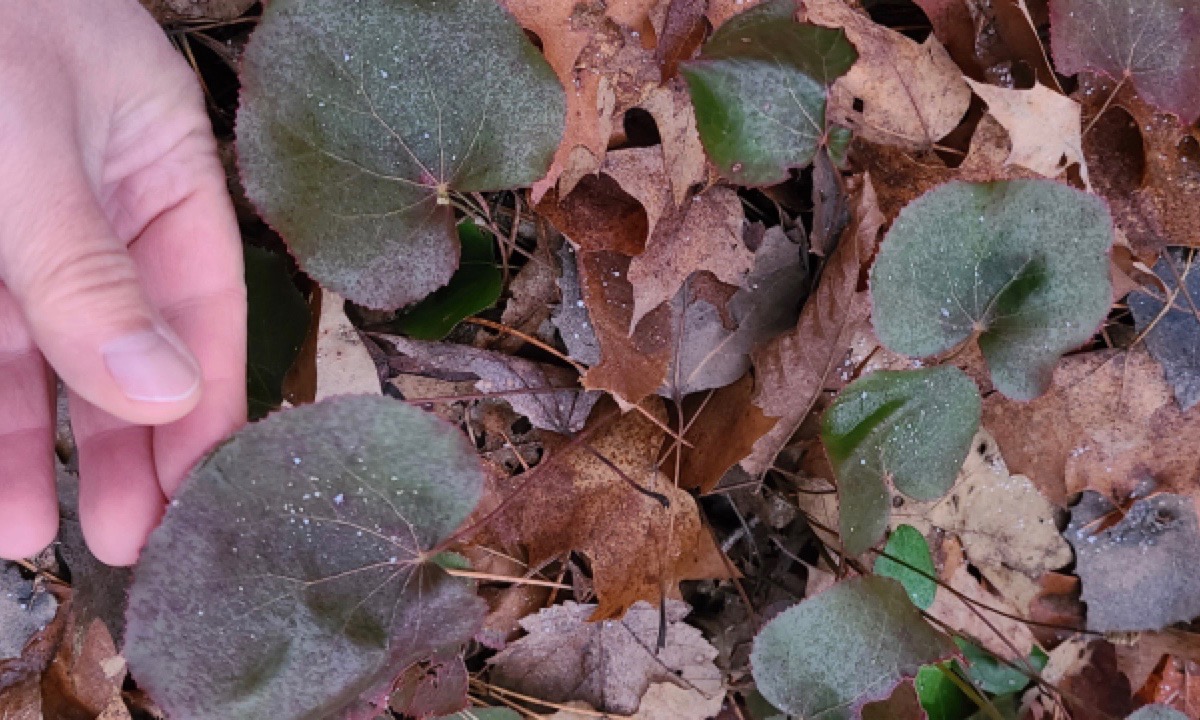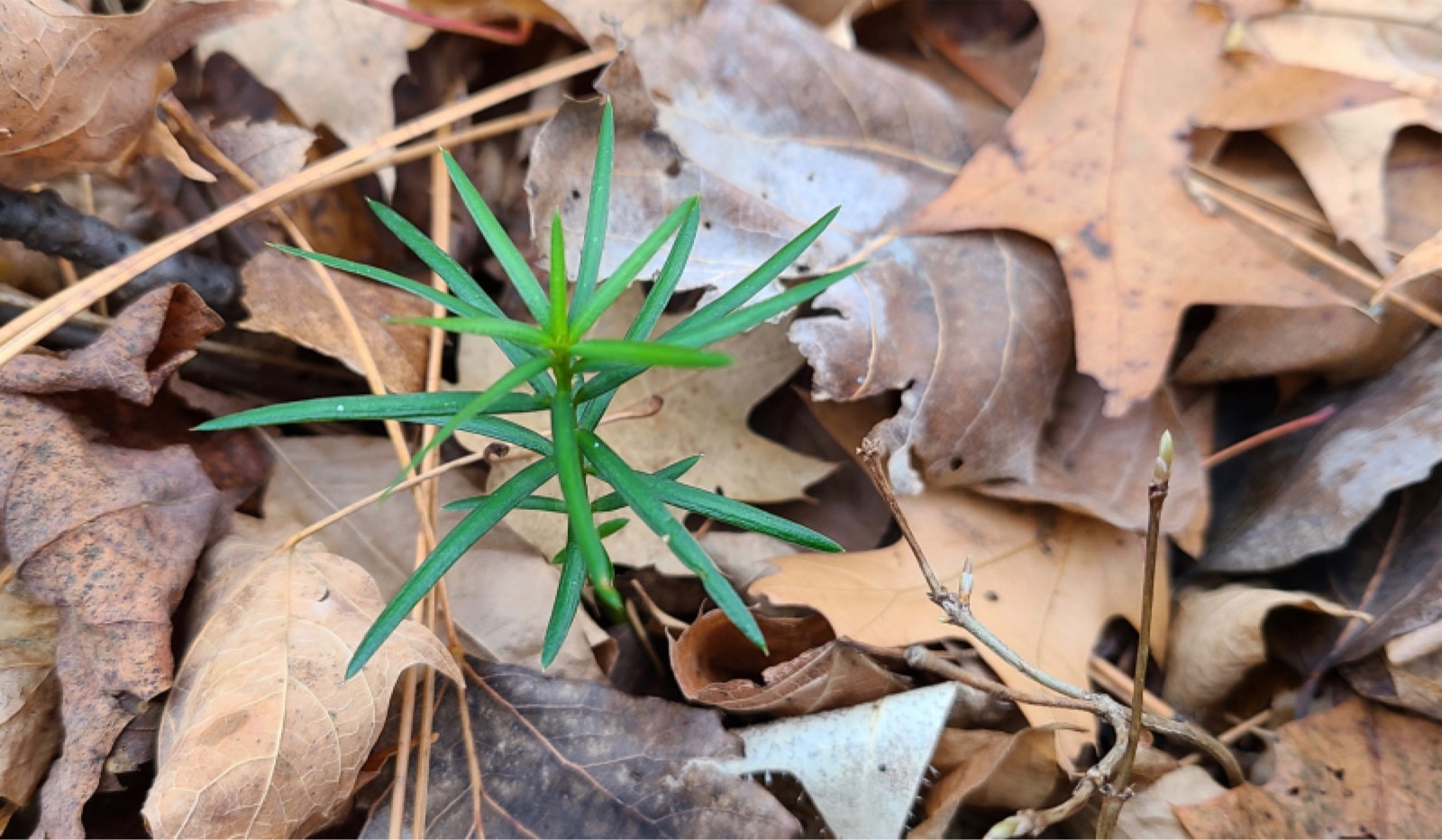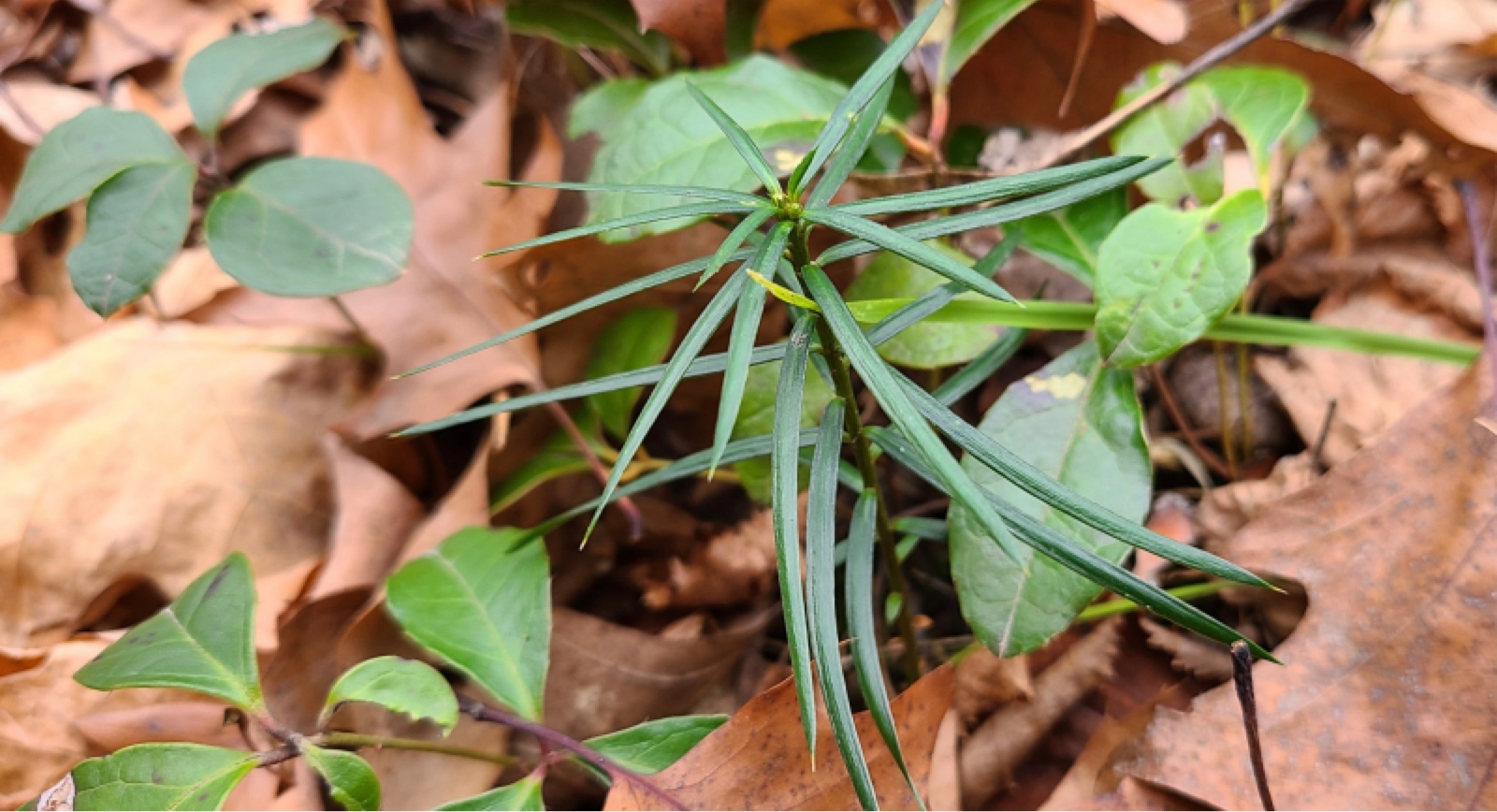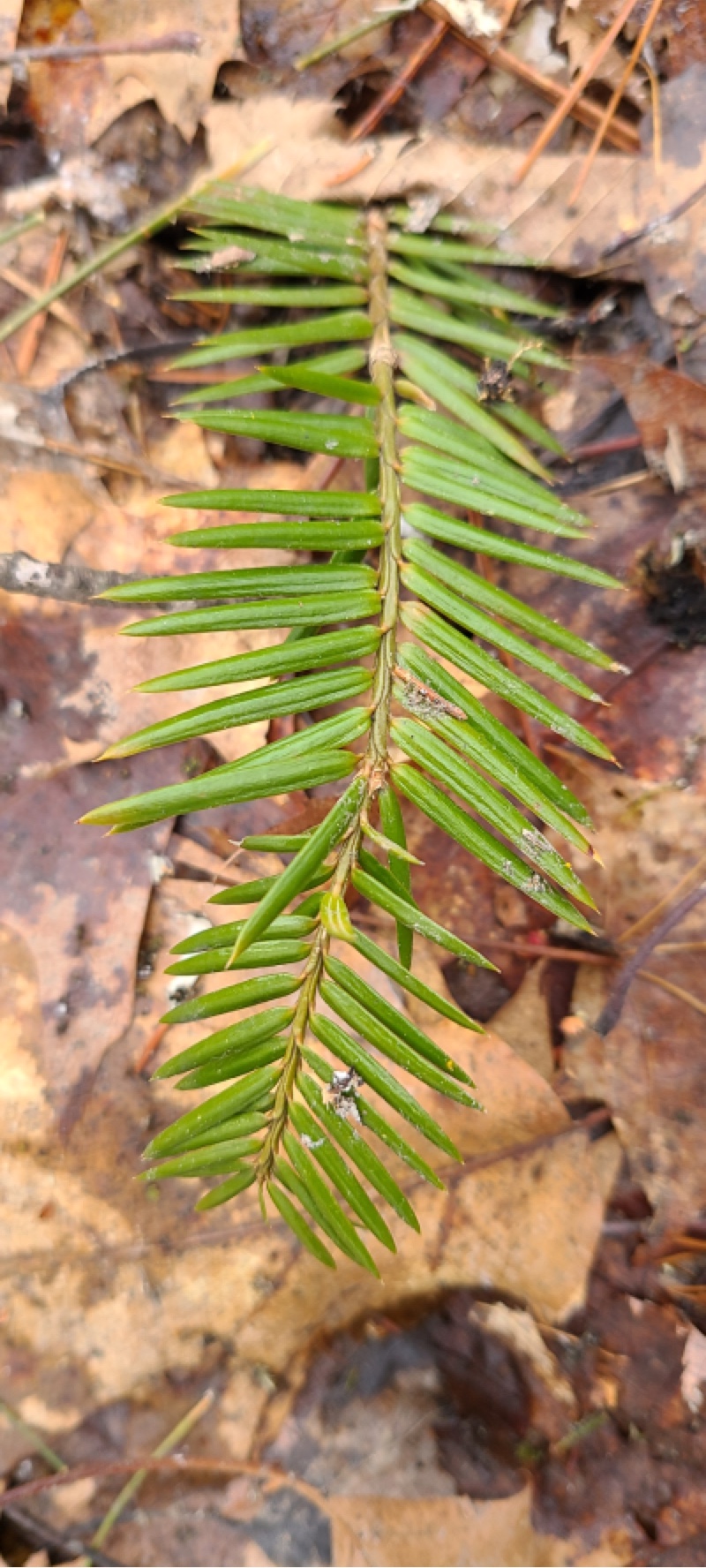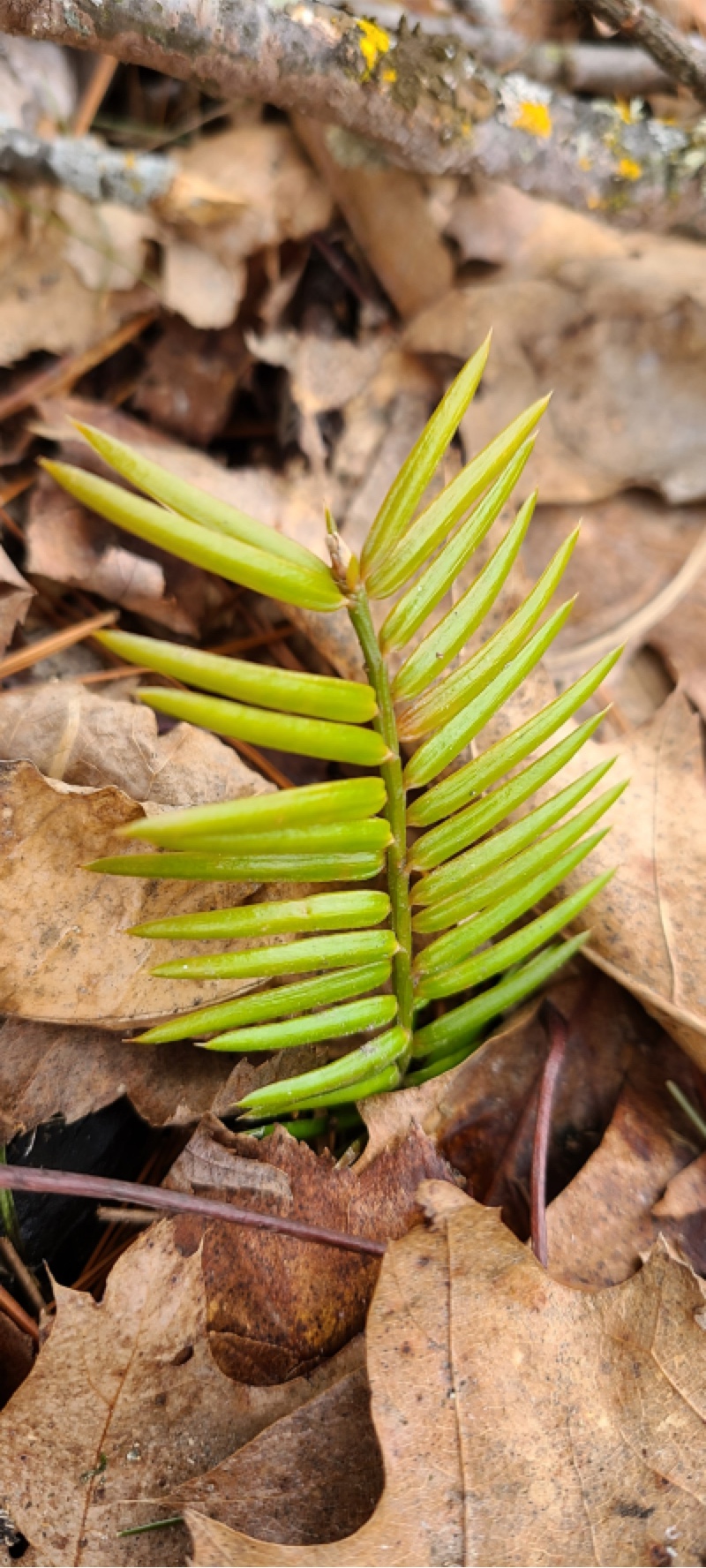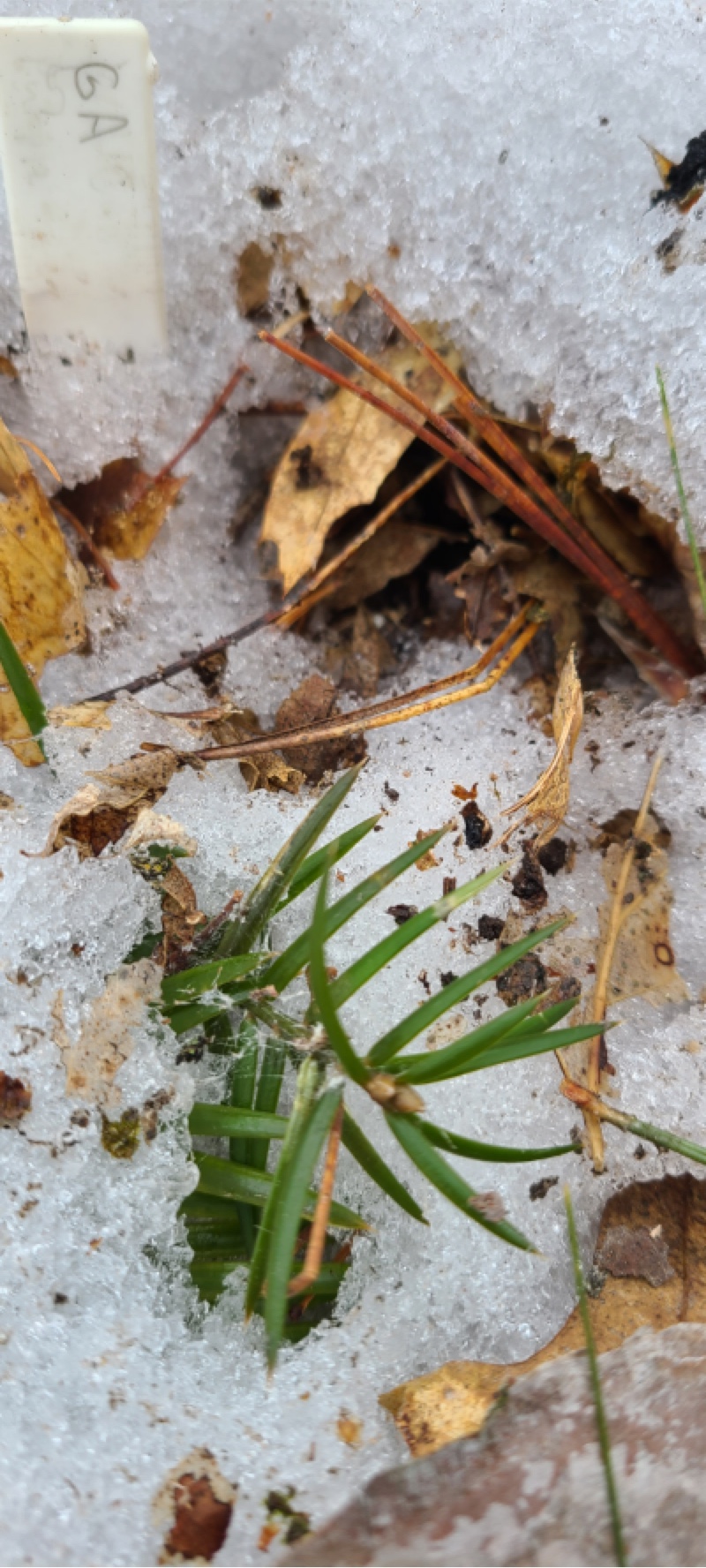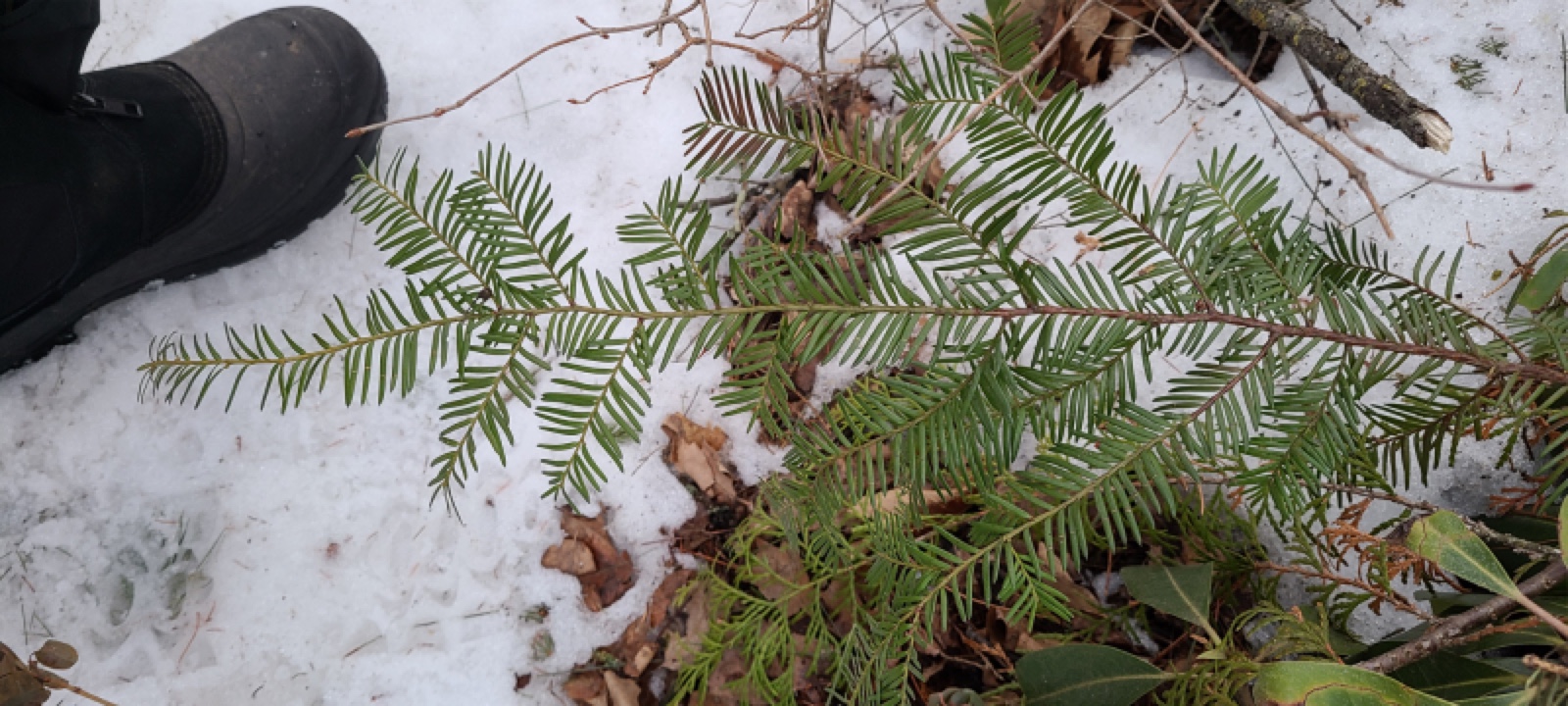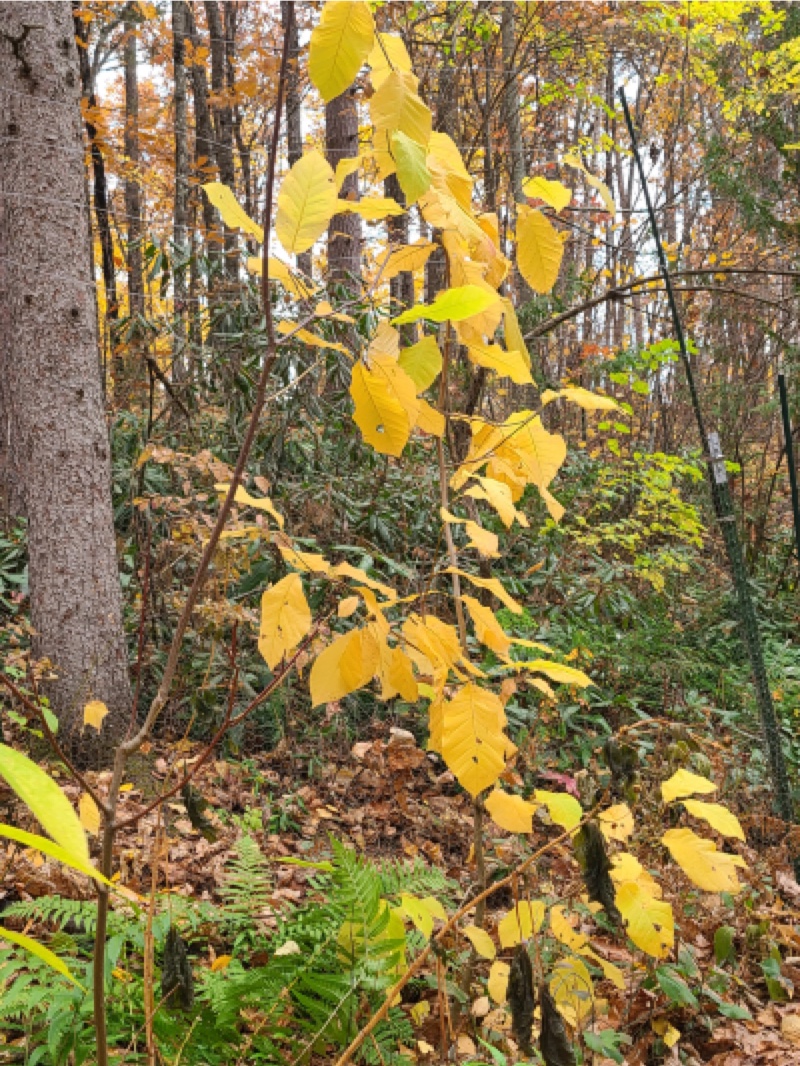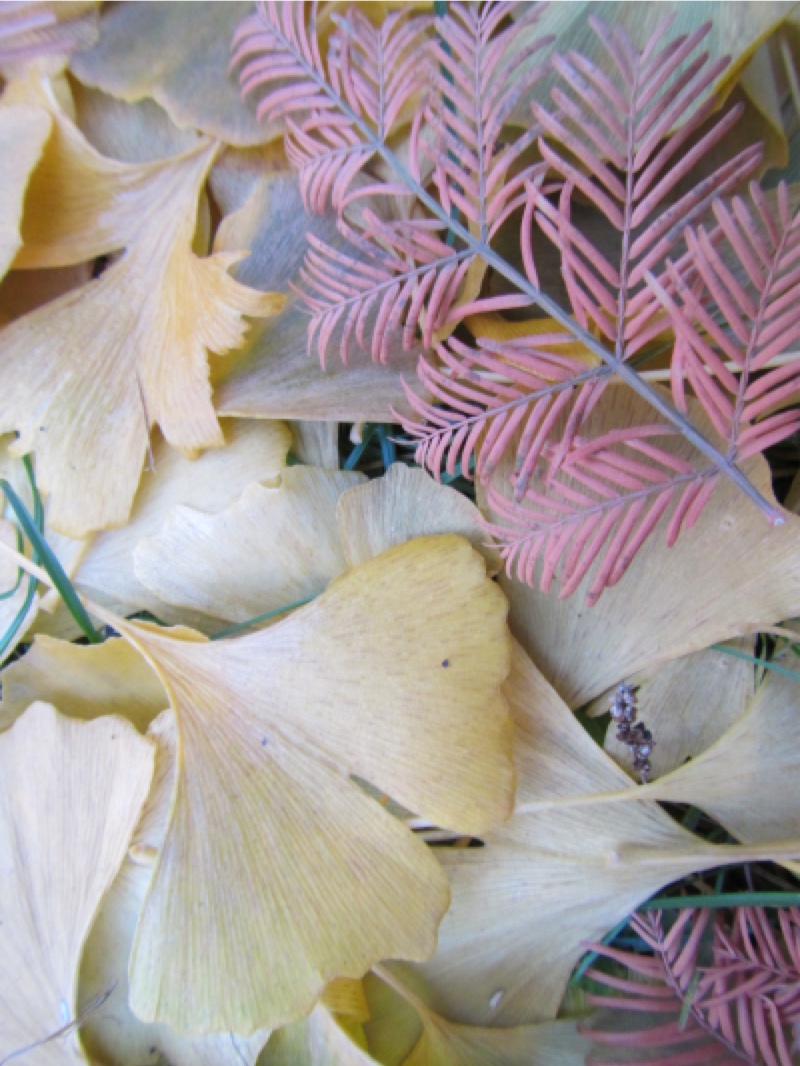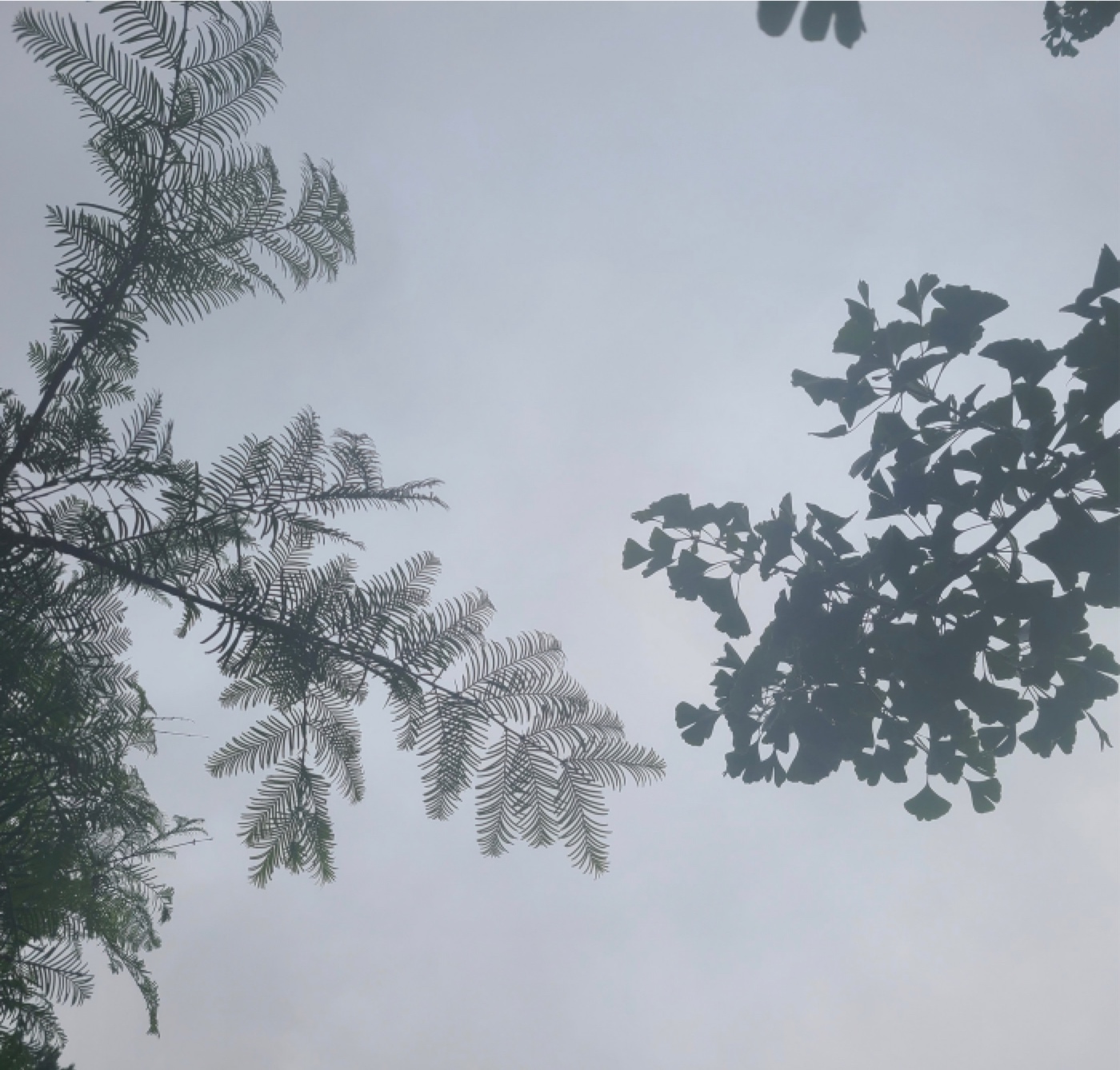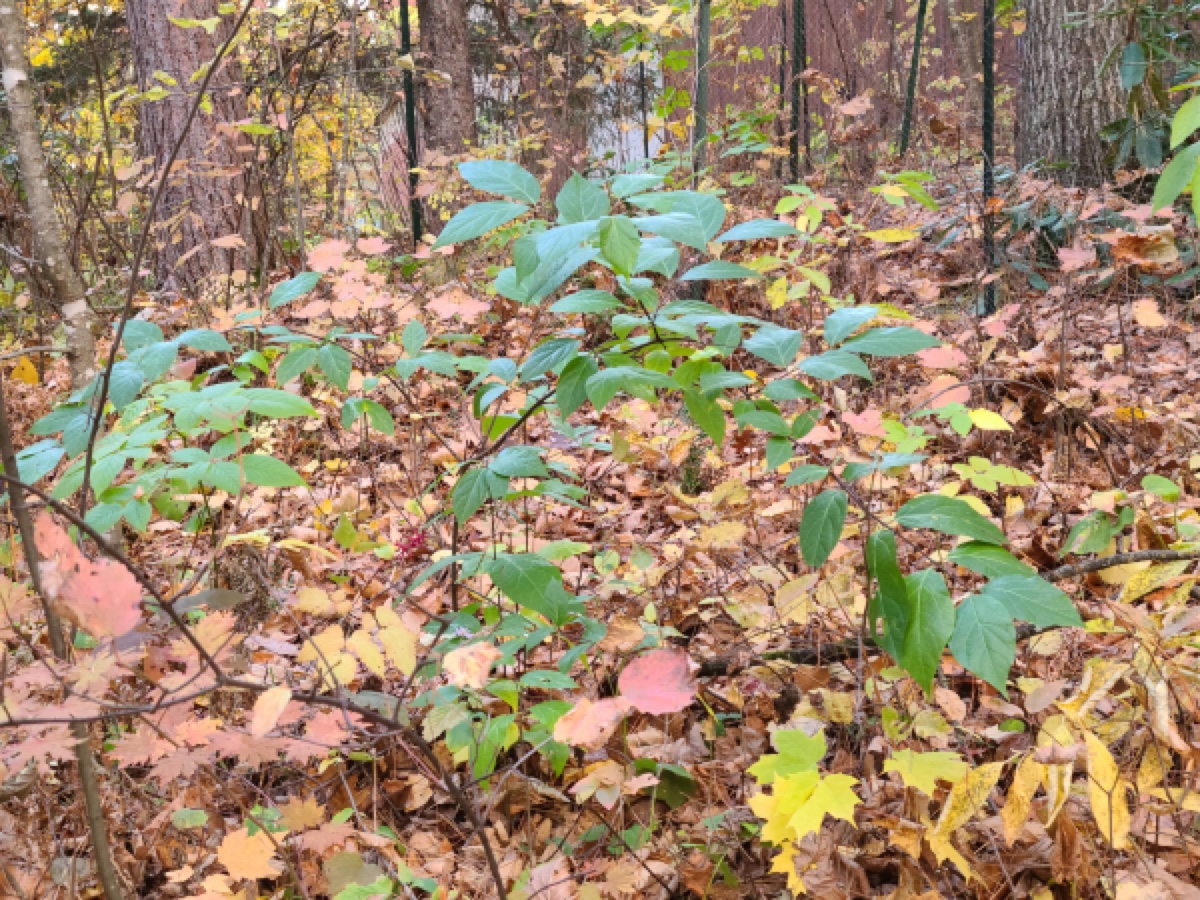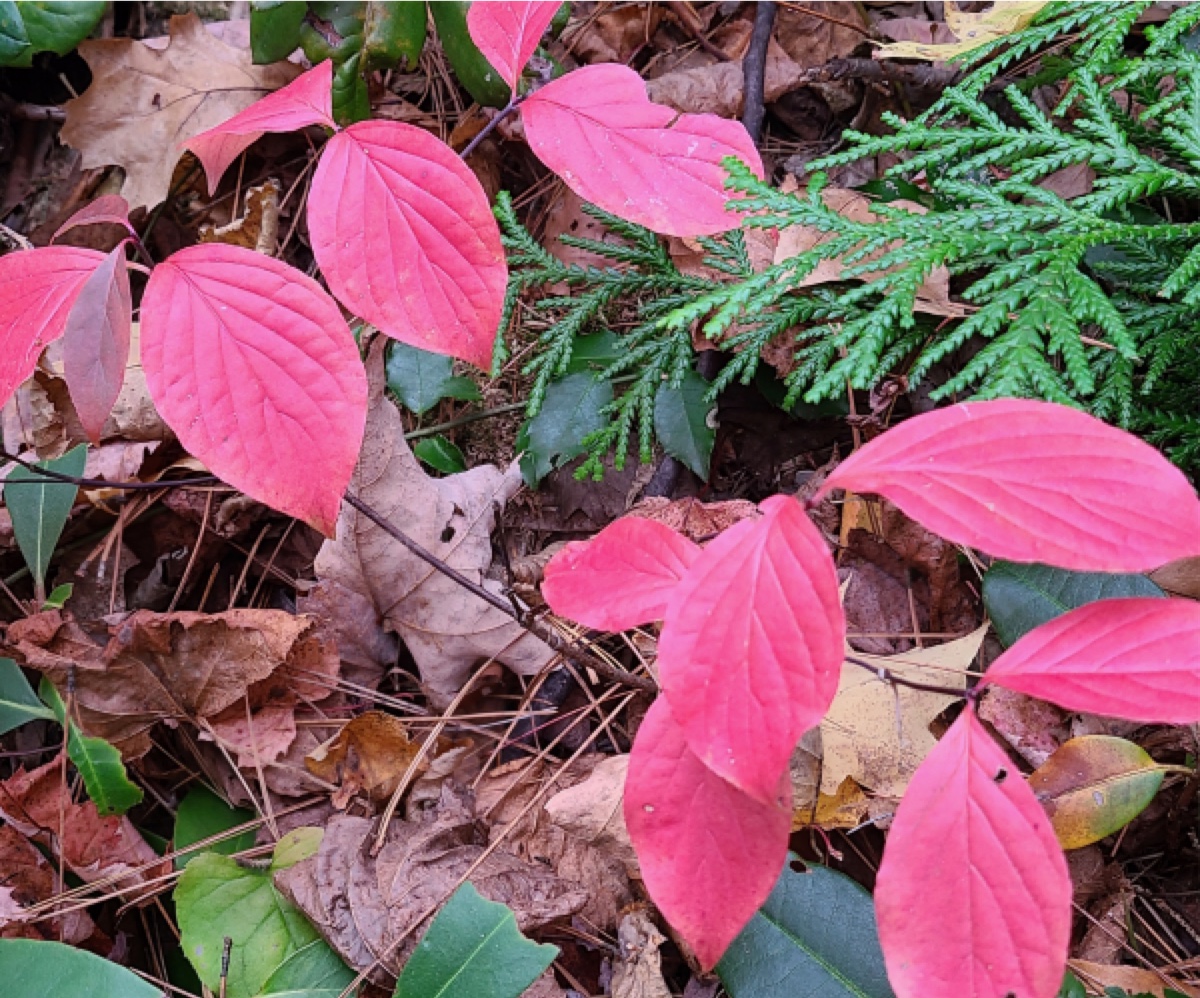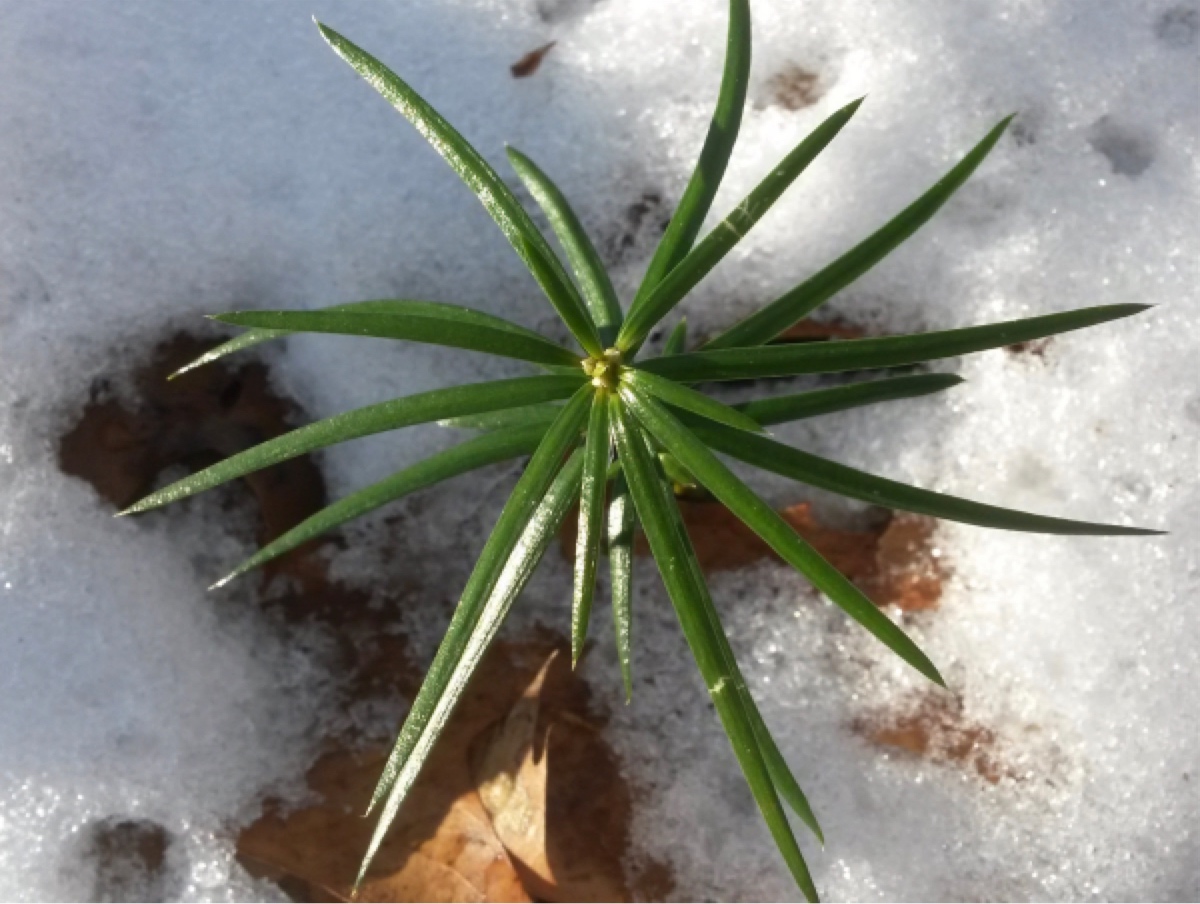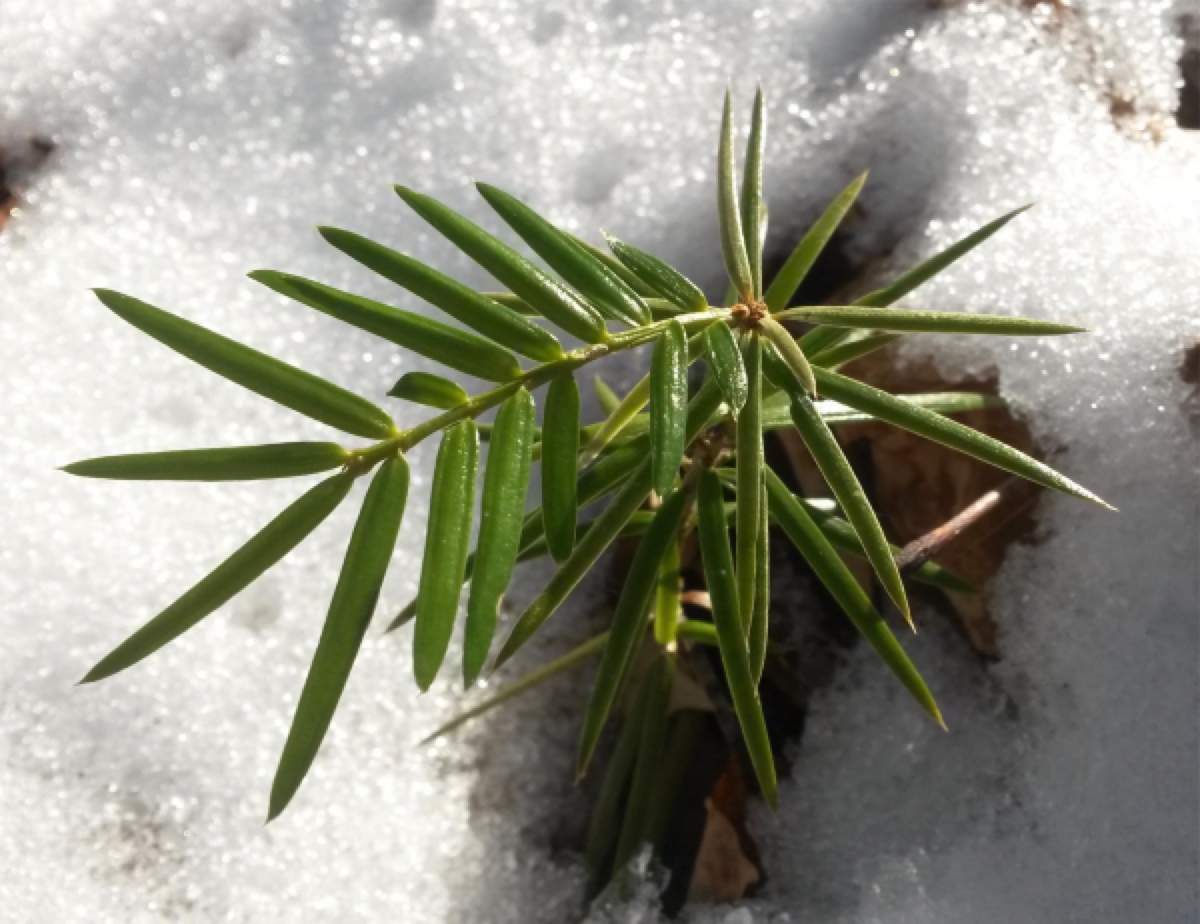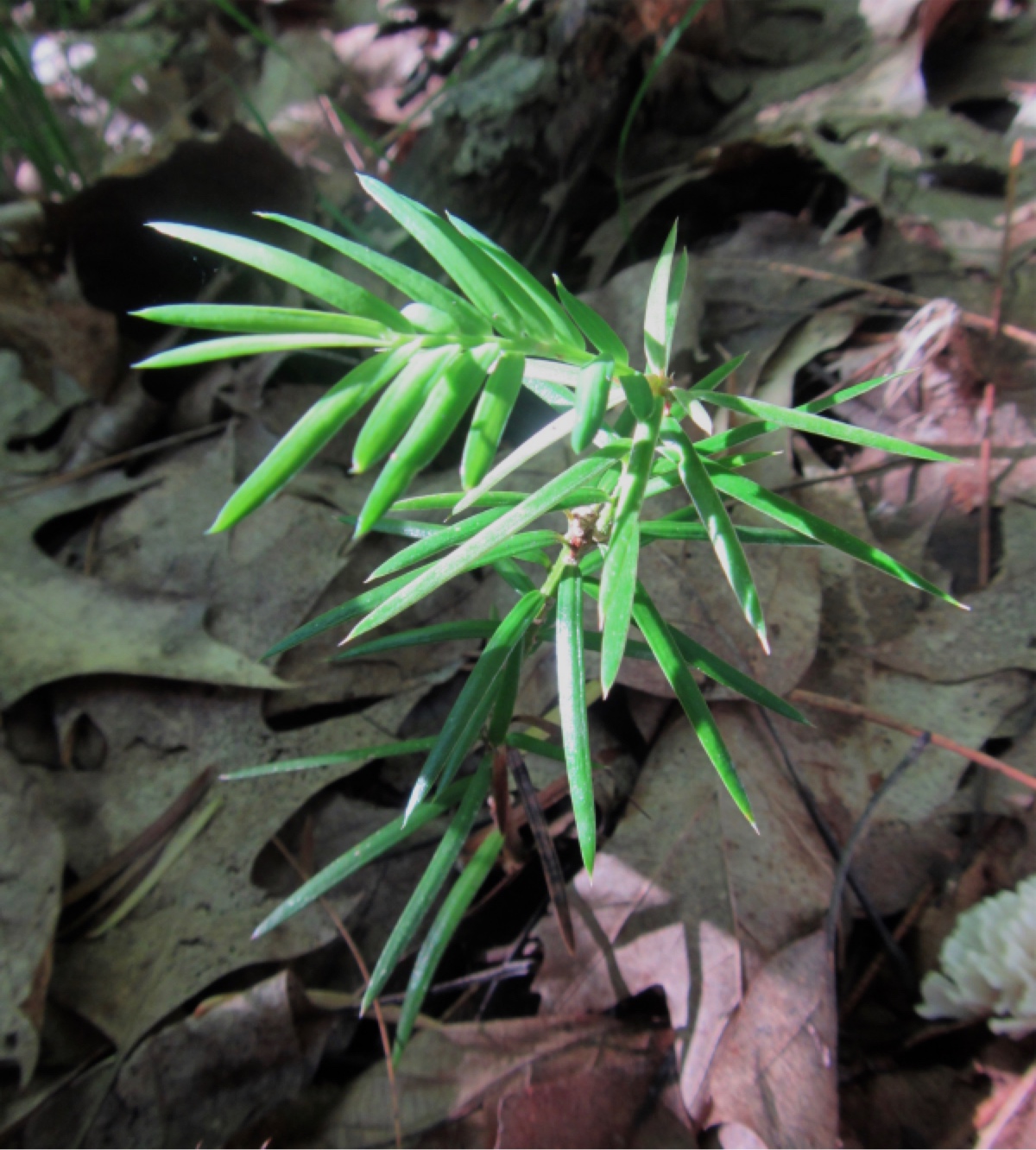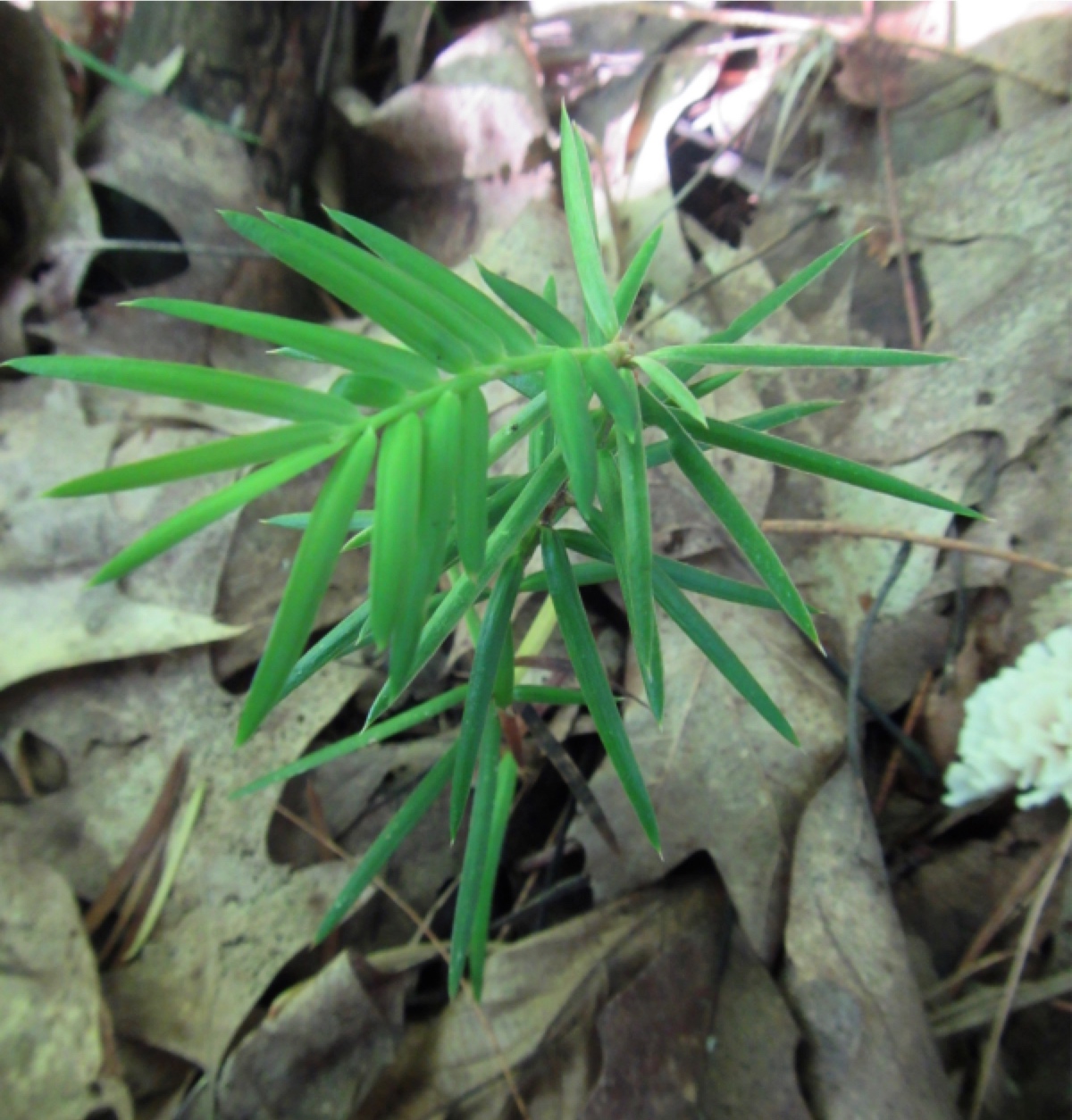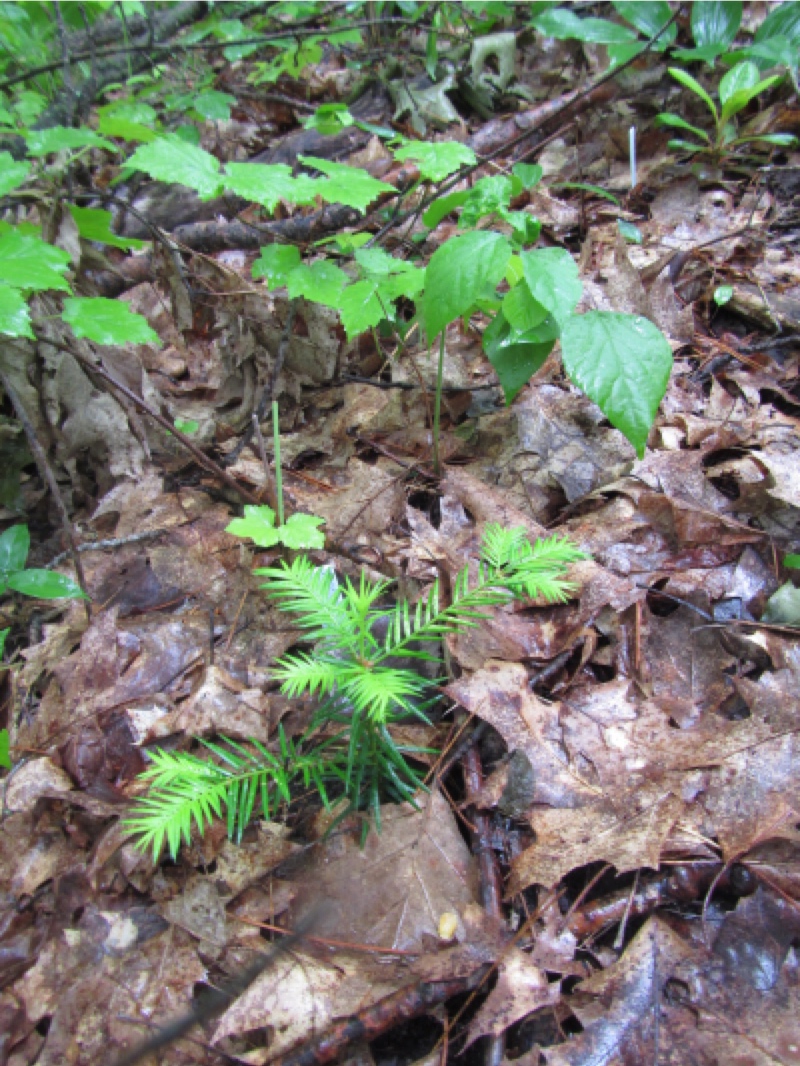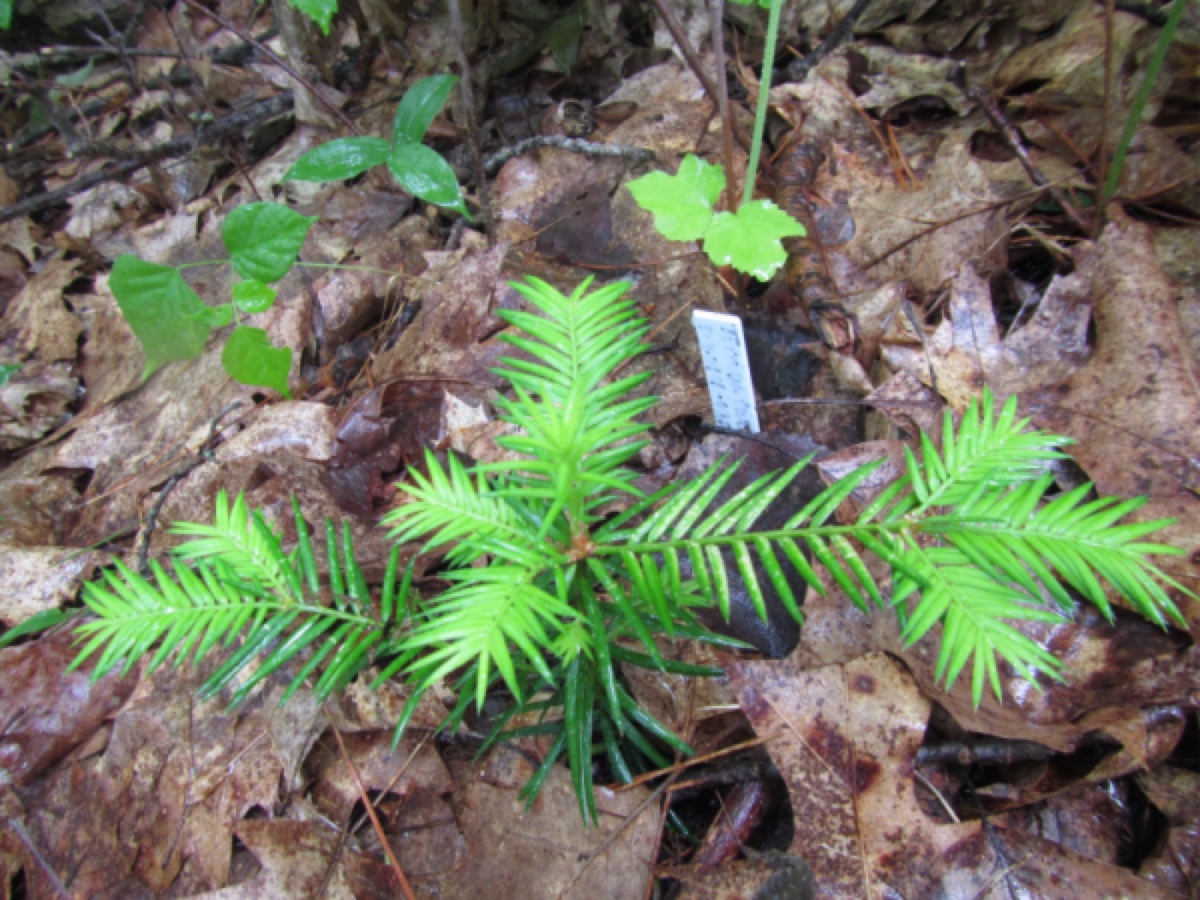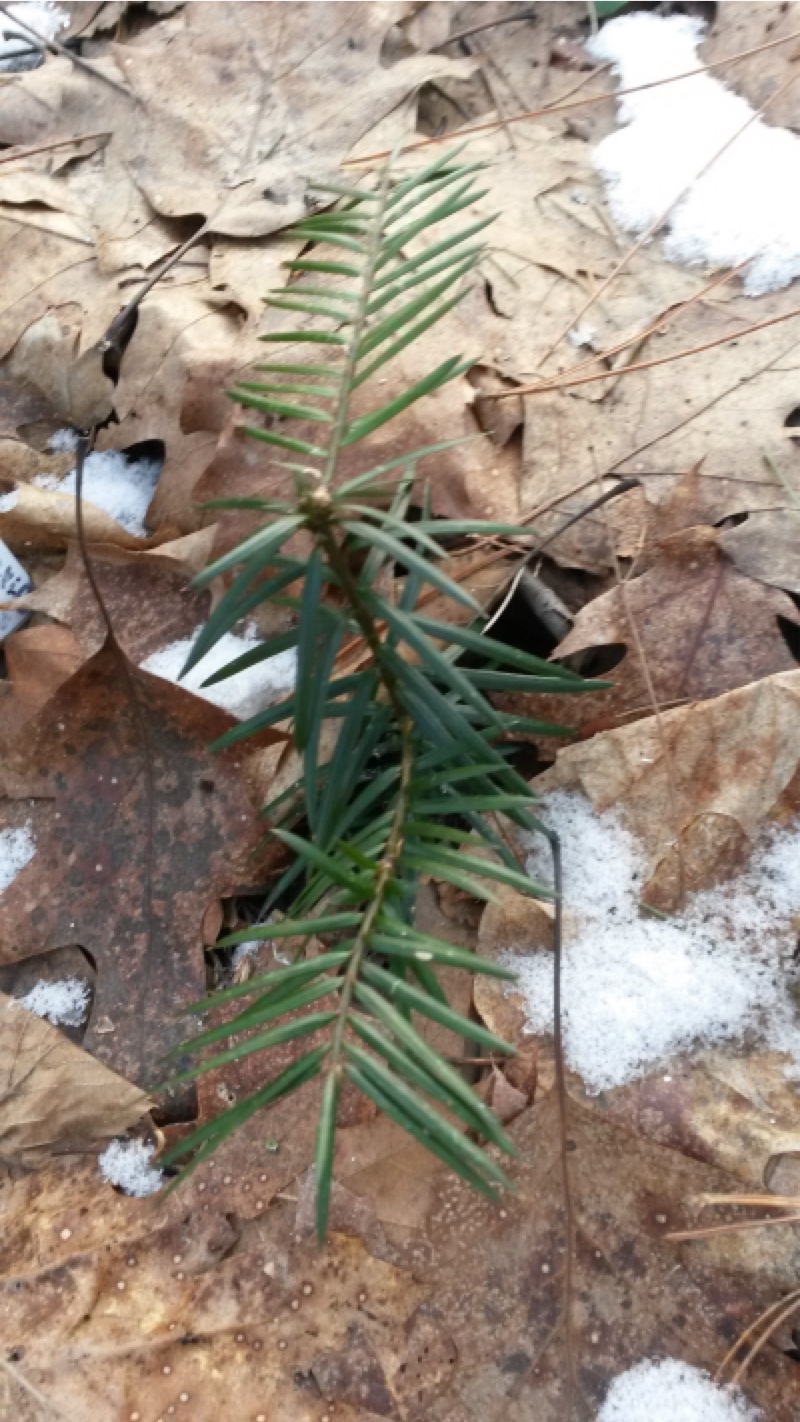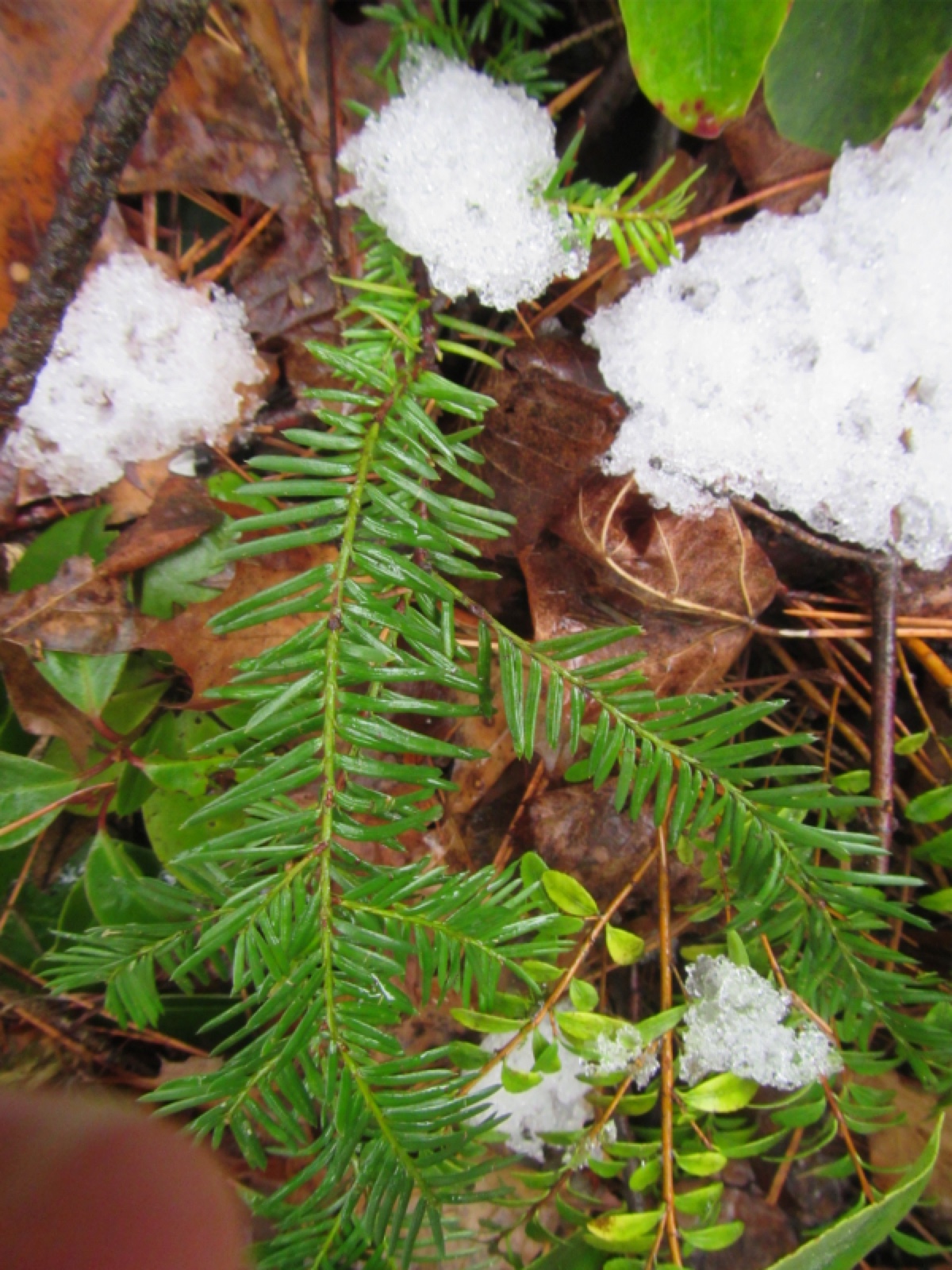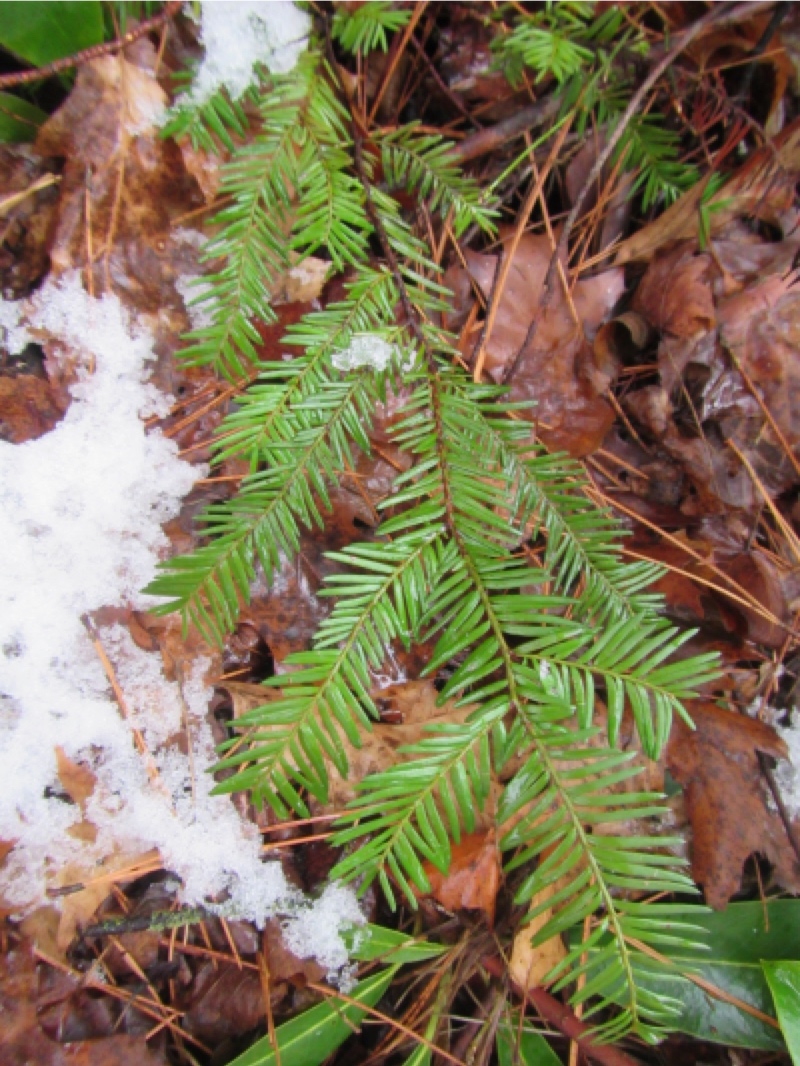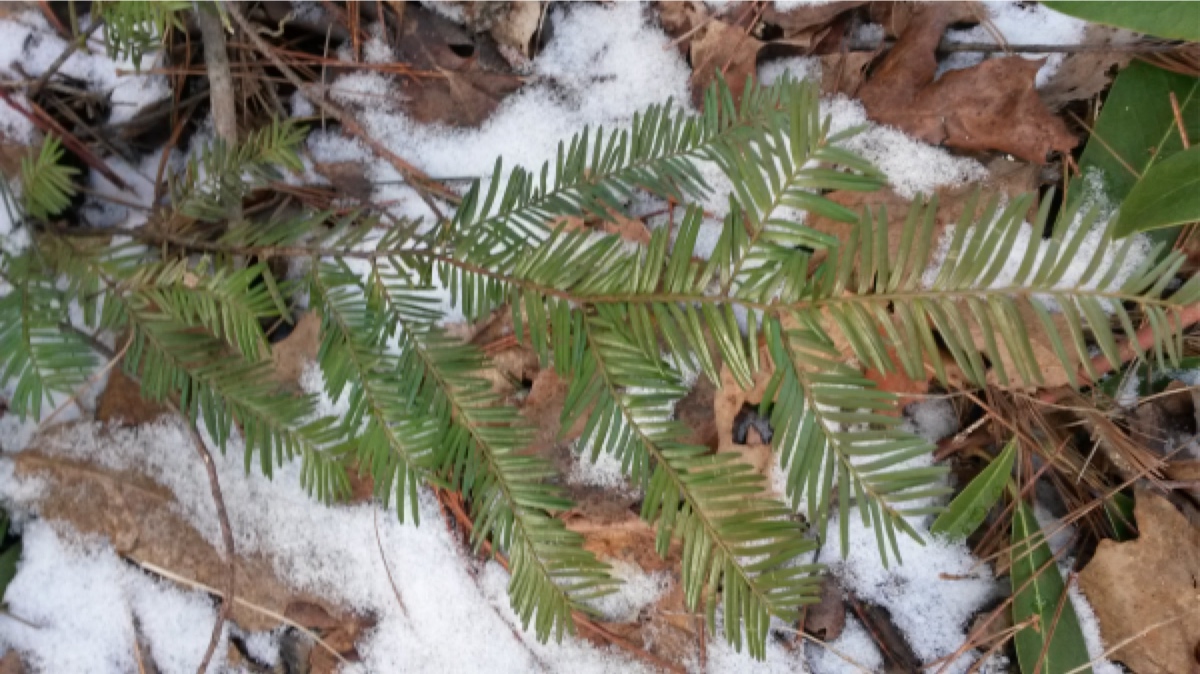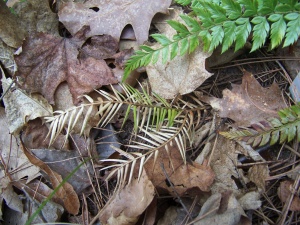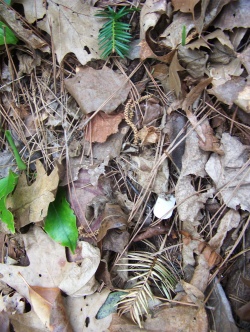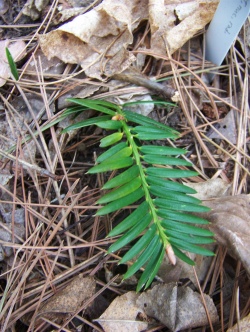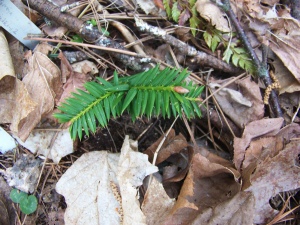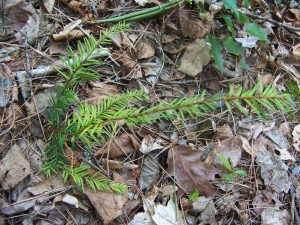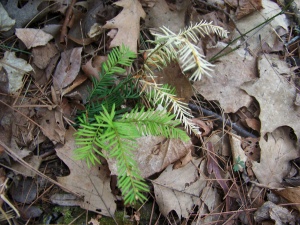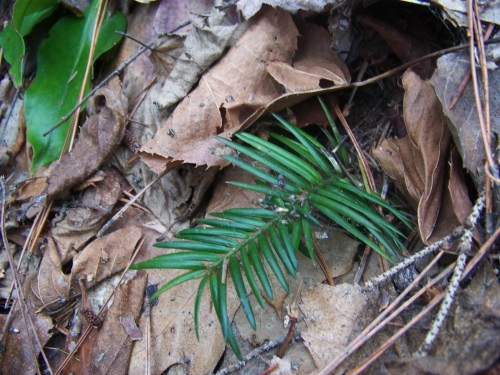|
Tertiary Rewilding in Northern Wisconsin
Hayward, Wisconsin
Torreya taxifolia, along with Florida Yew, are two of the species he surmises lived in Wisconsin prior to the climatic cooling at the onset of the Pliocene (about 5 million years ago), which was then followed by the glaciation of the Pleistocene. "Return of the Ericads: Students Dig and Reestablish a Prehistoric Species".
... The Heims are both scholars of the natural world, with Mike specializing in plants ranging from trees to ferns and Louise in landscaping. Their unique ecosystem including Spring Lake Creek provides rich habitat and a haven for flora and fauna amid the challenges of a changing climate. In their woods they leave the abundant natural understory, debris, and snags (standing dead trees) for habitat and bird nesting sites.
Connie Barlow continues: "Watching this video, I learned a vital ecological reason why Paul Camire has found in Michigan that RED MAPLE indicates poor habitat for planting Torreya. Instead, one would expect that native trees indicating well-drained rich soils (e.g., beech, sugar maple, basswood) would be good indicators of best potential Torreya habitats in the Great Lakes region." MIKE HEIM is also a FERN enthusiast. See his 2019 article, "A Wonderland of Ferns: Sharing a Piece of Land with Twenty-four Native Species".
• Visit Mike's PHOTOS & REPORTS of ASSISTED MIGRATION plantings: HERE.
Also on that page is his PHOTO-ESSAY: "Assisted Migration of Appalachian Species to Wisconsin."
• SEPTEMBER 2025 - proof that torreya seeds can stay dormant for 5 winters! In late 2020, Connie Barlow recorded this correspondence with Mike Heim: Nov 9, 2020, email he reports receiving 100 seeds from Connie (half Clinton / half Mt. Olive NC): "Connie, the seeds are all planted. I alternated the two sources along the footpaths...in the pouring rain. That's determination! Hopefully I avoided the vole runways."The below 3 photos were sent to Connie on 31 August 2025. Mike reports these as first emergences — not regrowth after a previous year herbivory. Because he has not received torreya seeds since that initial volume, this is proof that TORREYA CAN REMAIN DORMANT IN A WILD-FOREST SETTING IN NORTHERN STATES THROUGH 5 WINTERS!

 • JUNE 2025:
• APRIL 2025: Photo-Report on Winterkill
ABOVE & BELOW: These 4 torreya seedlings exhibit the full range of winter exposure: from zero damage to entire kill.
Now, let's consider what the actual minimum temperatures were there, using the closest archival record of DULUTH MINNESOTA:
ABOVE: mid January 2025 (-24F Jan 20; -27F Jan 21)
BELOW: mid February 2025 (-18 Feb 17; -17 Feb 18)
Note: DULUTH MN is a half-zone warmer than HAYWARD WI (see map directly below). Mike reports that his callibrated thermometer recorded not -27F on January 21, as shown above, but -30F.
ABOVE LEFT: Mike's home in Hayward is in the cold purple zone of the USDA Hardiness Map. That's ZONE 4a, which had a minimum temperature from 1991 through 2020 of -25F to -30 F. That is 4 half-zones colder than our other northern sites in southern Michigan and southern New Hampshire.
ABOVE RIGHT: Mike took this photo in late April of 2 nearby clones of Florida yew. The taller one had top-kill, although its lower branches are still green. The clone to the right is not as tall and escaped killing damage.
LEFT: Here is a close-up of that rightmost yew. There is just a bit of browning on the upward leaves of the topmost branchlet.
Paul Camire in CAPAC MICHIGAN also planted a Florida yew — in his forest, amidst his torreya plantings. It was unharmed this past winter. (Scroll to the bottom of the Capac, Michigan torreya page to see it.)
Mike Heim writes:
"Another clone remained covered by snow and is undamaged, while the third [ABOVE LEFT] was defoliated to killed back."
• DECEMBER 2024:
• NOVEMBER 2024:
One is a rooted-cutting planted last year.
Three of total had shown up as seedlings during 2023. The other 13 showed above-ground growth for the first time this year.
I wonder how many will germinate next year?
I've been trying to exclude a rabbit from the exclosure, where it apparently makes its home. We haven't had a cottontail in years.
LEFT: Freezing nights have arrived in Wisconsin.
BELOW: Photos of the other 15 torreyas in November. Each plant has a number (from my map) and the year it germinated in situ (or the cutting was planted).
• 15 AUGUST 2024:
(1) Seedlings sometimes emerge as late as mid-August.
(2) This and the previous 2 seedlings this summer are the first documentation of seeds sometimes taking 4 WINTER STRATIFICATIONS before showing above ground. (Scroll down to November 2020 to see documentation of the 100 seeds planted that month and year.)
• FEBRUARY 2024: - After 3 winter stratifications the first seedlings appeared Summer 2023
MIKE HEIM wrote: "Three and a half years ago, I cleaned the fresh Torreya seeds (2020 harvest in central North Carolina) and immediately planted them in situ into the woods exclosure. It was fun last summer watching the first seedlings appear one by one! Only a fraction of them (5; photos above) have come up so far. It will be exciting this coming summer to see how many more might appear!"
"Seedling #4 (above) just has a glossy cuticle shining in the sun, but #5 came up late and was slightly injured by the first frost. That's the only one with any sign of injury so far. We did have -16F, but they were covered in snow. -6F is the coldest they've been exposed to."
"I doubt they will harden in time for winter, but it would be exciting if just one did."
EDITOR'S UPDATE FEBRUARY 2024: All of them survived the winter. Only the last of a total of 5 to emerge suffered any winter damage. (See note above.)
• NOVEMBER 2022: - Mike Heim took photos of another eastern USA native plant, Galax — which, at his home in Wisconsin, is now far outside its range:
• OCTOBER 2022: - Mike Heim took photos of two new seedlings that emerged from seeds planted directly into his forest (within a fenced deer exclosure). He wrote: "It's taken 2 winters for them to germinate. Probably more on the way next year."
• APRIL 2022: - Mike Heim reported that February 13 the temperature dipped down to -29F. On April 3, he sent 3 photos of FLORIDA TORREYA and one photo of FLORIDA YEW (his boot alongside the yew):
• NOVEMBER 2020: - Mike Heim was sent 100 seeds (50/50) from the Clinton and Mt. Olive seed-collecting expedition made by Joe Facendola October 31: On November 9 Mike emailed, "The seeds are all planted. I alternated the two sources along the footpaths — in the pouring rain. That's determination! Hopefully I avoided the vole runways." Note: He planted the seeds within his large, fenced deer exclosure, beneath a deciduous canopy.
• OCTOBER 2020: - Photos of Mike's forest plantings of America's northern-most native magnolia (Cucumber Magnolia, well north of its native range) and the pair of "living fossil" trees that used to be in North America: Dawn Redwood and Ginkgo.
More photos below: Two subcanopy woody plants of eastern North America — substantially north of their native range: Sweetshrub (Calycanthus floridus) and Flowering Dogwood (Cornus florida).
• SEPTEMBER 2020: - "It may interest you to know that I am growing pure American chestnuts that are blight resistant. They originated as seedlings from Michigan. One of them did get the blight many years ago, but the others nearby never did and are gorgeous trees. I understand that the USFS is monitoring small stands of chestnuts in KY, etc. that have escaped the blight, which is a little known fact to most people."... "By the way, after many valiant attempts, I finally got a couple of pawpaws to survive here.
• NOVEMBER 2019 - New germination of a free-planted seed + early winter report
Mike Heim writes, "Thought you might like an update on the Florida torreyas way up here in northern Wisconsin. It's all good news.
PHOTO RIGHT (Nov. 24): This one is from the native Georgia population that has been growing here without injury for several years. Last winter it survived under only a couple of inches of snow at -36F. This fall both of these plants were exposed to -6F on November 12th, which is exceptionally early for such cold. There was no snow whatsoever. As you can see, the torreyas were not fazed by this.
Editor's note: Compare photo above right to photo below right. The July photo shows the delicate new growth, which is hardened off and glossy in the above right photo.
• JULY 2019 - A Florida torreya seedling after 3 winters in northern Wisconsin.
Mike Heim writes, "This was its third winter here and I don't give it any protection from the cold besides what Mother Nature provides. This past winter the temperature dropped to -36F with only 5 or 6 inches of snowcover. This last surviving GA torreya seedling was protected by snow, but not much — maybe an inch. This was our coldest winter since the 1990s.... This Torreya is the only survivor of two originals pictured in the March 2017 report below. (This is the seedling pictured in the left photo of 2017.)"
HOWEVER, "the June 2017 photos (below) were of a different, larger seedling. It died for no apparent reason. I wish I would have checked for rodent damage at the time, but only much later read about this problem." Deer herbivory is ruled out because an exclosure surrounds the plantings of Florida Torreya and Florida Yew.
After having his rooted cuttings of Torreya taxifolia die during their first Wisconsin winter in 2010, Mike decided to plant specimens that had germinated from seeds (and therefore would have better root systems).
Summer of 2016, Mike obtained 3 potted seedlings, donated by Dawes Arboretum (Ohio) from seeds sourced by Torreya Guardians (Georgia provenance). One died in the spring (something about the microsite perhaps) and as you can see, the other two are thriving.
LEFT AND BELOW: The Florida yew rooted cuttings (Taxus floridana) pictured in the 2010 photos below are still alive and growing.
Because they were rooted cuttings (not grown from seed) they will retain the horizontal growth form of the lateral branch cut from their mother tree.
A ground-hugging growth habit may be very advantageous in the north woods of Wisconsin — and for two reasons. First, snow cover will likely bury and thus protect it from extreme episodes of cold. Second, the snow will hide it from the winter-starved deer.
Photo left is one example of a dead or dying Torreya.
LEFT: In contrast to the fate of Florida Torreya (dead at bottom of photo), the Asian species, Torreya nucifera, is thriving (green at photo top).
COMMENTARY - Funny it took until now (April 26, 2010) for the dying to become apparent.
Anyway, it was a good learning experience and shows that these highly endemic species became that way for a reason during the Pleistocene or perhaps even before.
On the other hand, maybe their northern populations were eliminated by
environmental change and only the less hardy southernmost ones survived.
Guess we might never know.
The good news is that several Torreya nucifera (Asian species) came through in perfect shape! The box huckleberries also came through this winter splendidly. My biology students collected baseline data on them last week and I'm thinking they'll put on lots of new growth and runners this summer — if the drought doesn't stay too severe.
The Japanese species of genus Torreya, Torreya nucifera radicans, seems to thrive on the property.
Taxus floridana post-winter.
Right-most shows more damage from exposure.
ABOVE (2 PHOTOS): Florida Yew rooted cutting after its first winter. This species is much more site-tolerant than Torreya and was exposed to minus 12F without injury.
The plants only survived the winter on steep slopes.
Mike's ongoing photos and reports of other Tertiary-age genera that were either extirpated from Wisconsin or fully extirpated in North America (surviving thru the cold times only in Asia) are posted on a separate webpage on this site.
Also on that page is his PHOTO-ESSAY: "Assisted Migration of Appalachian Species to Wisconsin."
• Visit Mike's PHOTOS & REPORTS of ASSISTED MIGRATION plantings: HERE.
|
